  |
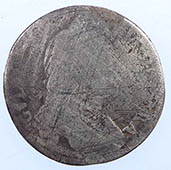  |
| 1216 Henry III hammered silver short cross half penny |
17th C William III milled silver shilling (12 pence) |
 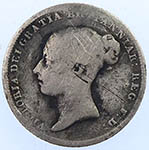 |
 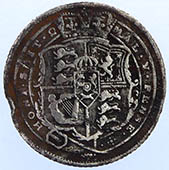 |
| 1845 Victoria milled silver sixpence |
|
|
 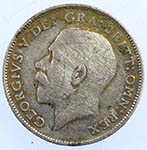 |
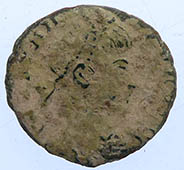 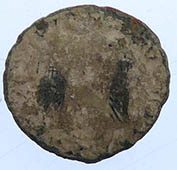 |
| 1924 George V milled silver sixpence |
Mid 4thC Roman Constantine bronze coin - two soldiers standing |
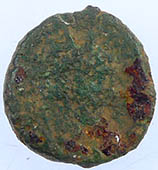  |
 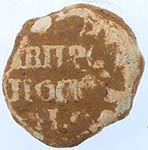 |
| Mid 4thC Roman barbarous bronze coin |
1840 Russian lead bale seal |
 |
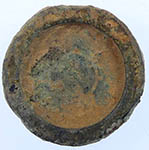 |
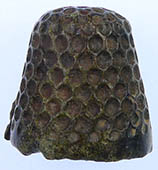 |
 |
| Georgian trade weight |
Georgian trade weight |
17thC thimble |
THE 33RD REGIMENT OF FOOT. / After 1881 :- 1st Battalion The Duke Of Wellington's (West Riding) Regiment
Officer - 1848-1853 |
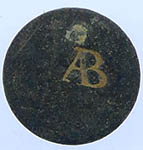 |
 |
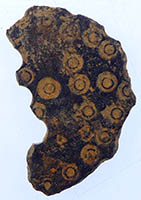 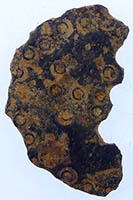 |
| Unknown coin weight - checking the ref books |
Admiralty Civil Police
In use 1940 - 1949
became the Admiralty
Constabulary in 1949 |
c10th C Saxon decorated mount - classic circule design |
  |
| Large medieval key |
 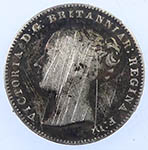 |
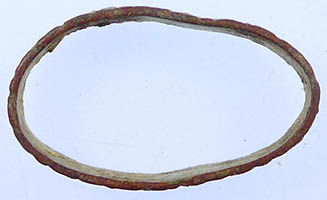

|
| 1858 Victoria milled silver three pence |
17thC decorated finger ring |
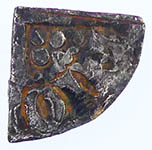 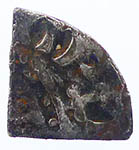 |
 |
1247 Henry III hammered silver voided long cross halfpenny
Rev/RIO/ - Moneyer Henri |
Georgian nut cracker |
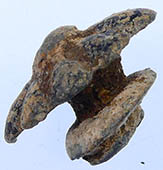 |
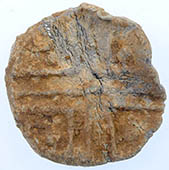 |
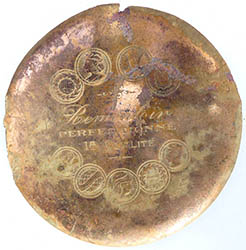 |
| Georgian lead tobacco jar lid handle |
15th C lead token |
1900's Antique pocket watch - Remontoir Perfectionne pocket watch
Swiss made |
 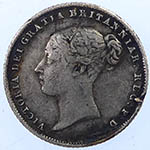 |
 |
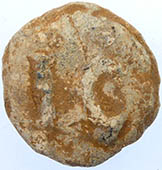 |
| 1856 Victoria milled silver sixpence |
15th lead token |
17th lead token |
 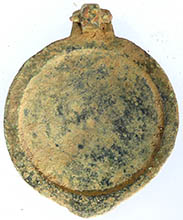 |
 |
 |
| Victorian ink well cover |
Georgian mount |
1500-1700 mount |
 |
 |
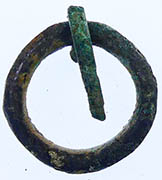 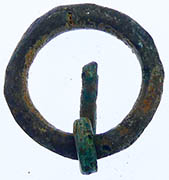 |
| Georgian buckle |
Georgian watch winders |
Medieval annular brooch |
 |
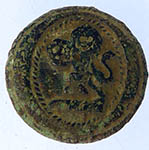 |
 |
| 1890 Army general service buttons |
MN - G & J Burns Ltd In use 1842 - 1922 |
18thC Royal artillery buttons |
 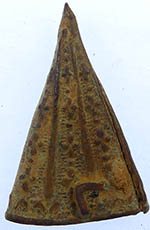 |
 |
 |
| Victorian candle snuffer |
18thC Royal Navy silver button |
19thC livery button |
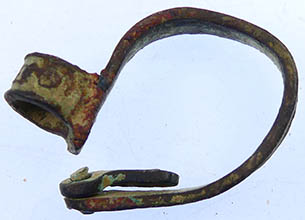
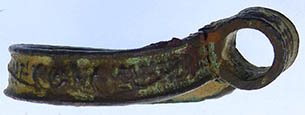
|
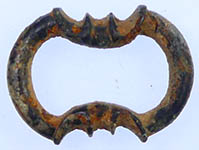 |
| 17thC decorated clasp |
Georgian shoe buckle |
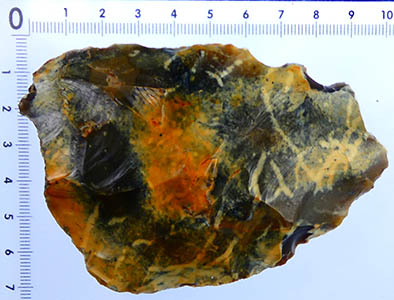  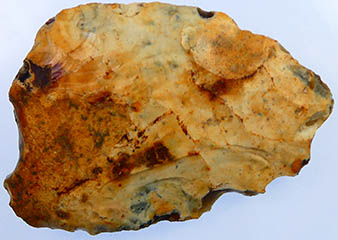

11,000 BC flint axe head |
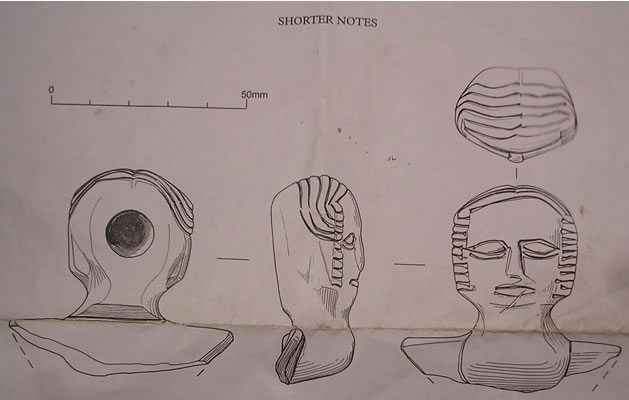
A deep circular hollow in the back of the head is for the attachment of a handle and the break at the neck is where the head would have been soldered to the side of the vessel
The mount represents the laver's greatest point of weakness and thus its most vulnerable point of weakness. A complete laver with female head mounts is in the collections of the British Museum (Cat No MME 1956, 7-2,1) '
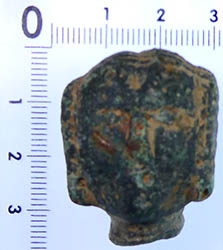 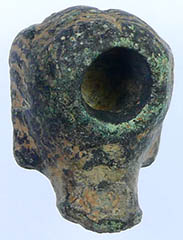 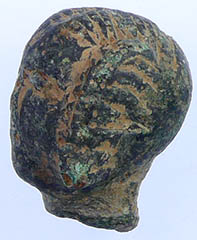 
Medieval bronze vessel handle mount |
  |
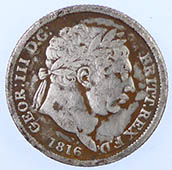 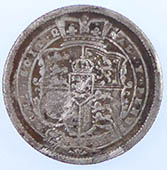 |
| Georgian pipe tamper |
1816 George III milled silver shilling |
 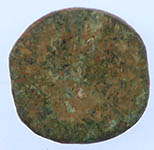 |
 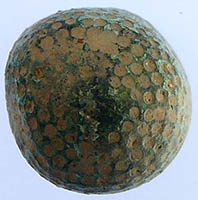 |
15thC British Ryal - ship type coin weight with rose
Gold Rose noble or ryal |
Medieval bronze beehive thimble |
 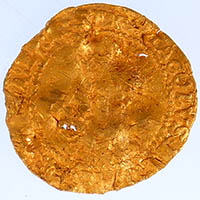
1604-5 James 1st hammered gold Britain crown - Lis mint mark
2.43g, 20.85mm |
 |
 |
  |
| 1500-1700 mount |
18thC Royal Artillery button |
Medieval hanger |
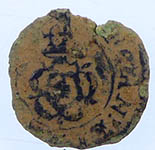 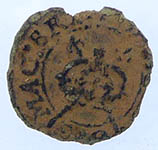 |
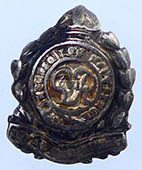 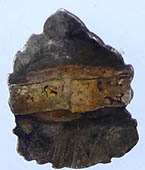 |
| 1634 Charles 1st hammered copper rose farthing |
George V silver Royal Engineers sweetheart badge |


|
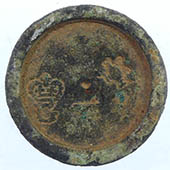 |
| 17th C silver spoon handle - reported as treasure to museum |
Georgian trade weight - crown G cipher |
  |
 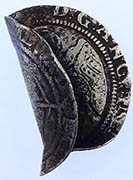 |
| 1679 Charles II milled silver four pence |
1583 Elizabeth 1st hammered silver sixpence |
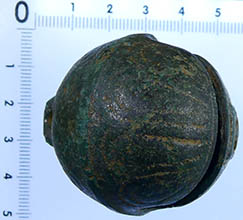  |
| 2 Large crotal bells - hammer foundry mark |


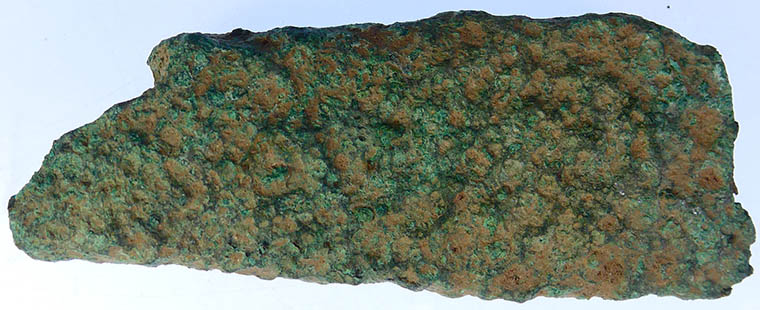


Bronze Age - socketed chisel |
 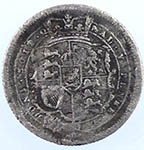 |
 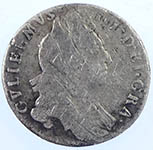 |
| 1816 Georgian milled silver shilling |
1697 William III milled silver sixpence |
 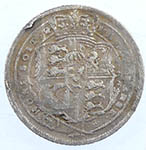 |
  |
| 1816 Georgian milled silver sixpence |
1575 Elizabeth 1st hammered silver sixpence |
 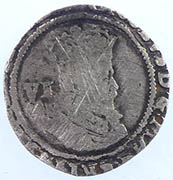 |
 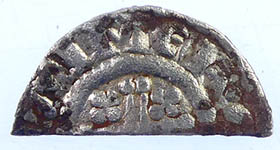 |
| 1605 James 1st hammered silver sixpence |
1216 Henry III hammered silver short cross half penny
Rev AILMER. Moneyer Ailmer |
 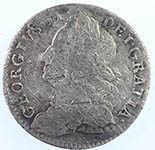 |
 |
| 1757 George II milled silver sixpence |
1903 Sandown Park horse racing club enamelled badge - Ladies badge
|
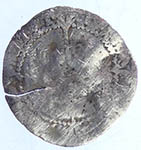 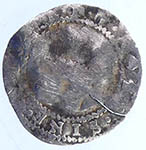 |
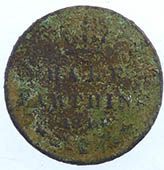  |
| 16th C Elizabeth 1st hammered silver half penny |
1844 Victoria milled copper half farthing |
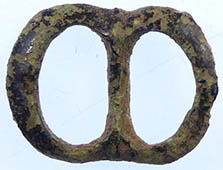 |
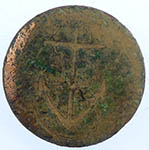 |
 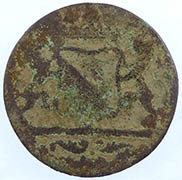 |
| 1500-1650 buckle |
Capt / Commander - 1774-1787
RN Master & Mate - 1787-1807
RN Surgeon - 1787-1805 |
1788 Dutch Utrecht Duit coin. Smallest Netherlands Province |
 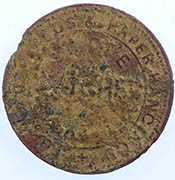 |
 |
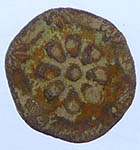 |
| 19th C Colchester Bedwell token |
20th C corporation button |
Georgian button |
  |
 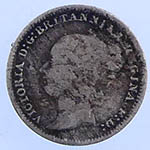 |
| 1697 William III milled silver half crown(30 pence) |
1883 Victoria milled silver one pence |

Size comparison between milled silver half-crown (30 pence) to a one penny |
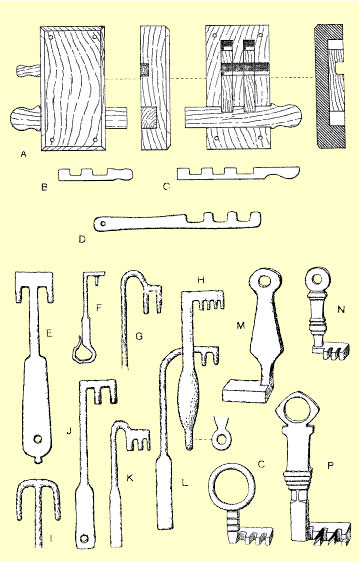 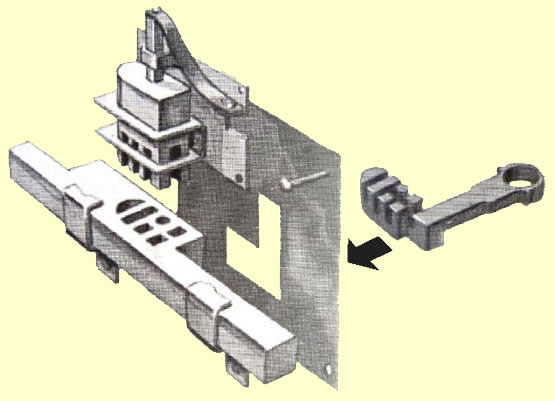
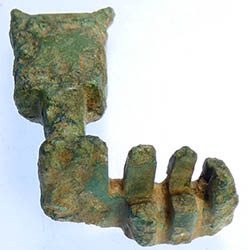 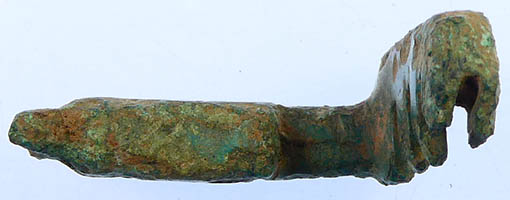 
|
| 1st to 4th C Roman key |
 |
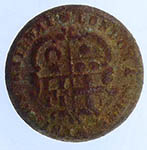 |
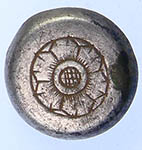 |
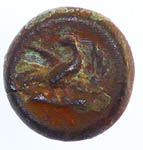 |
| 17th C lead token |
Wilwall London corporation button |
18th C Royal Navy silver button |
19thC livery button |
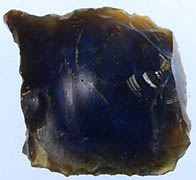 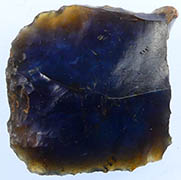 |
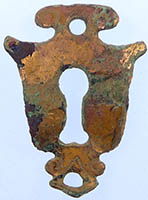 |
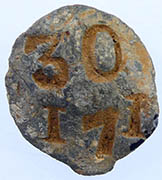 |
| 11,000 BC flint scraper |
Georgian gilded key hole escutcheon |
Lead number tag |
 |
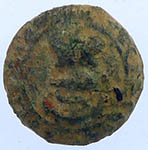 |
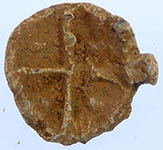 |
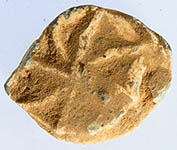 |
| Roman lead token |
WWII Royal Marines button |
15th C lead token |
15th C lead token |
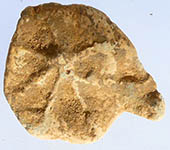 |
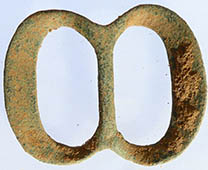 |
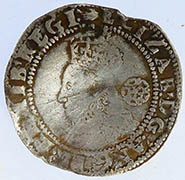  |
| 15th C lead token |
1500-1650 buckle |
1590-2 Elizabeth 1st hammered silver sixpence - hand mint mark |
 |
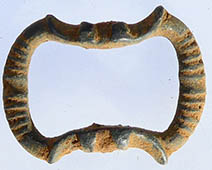 |
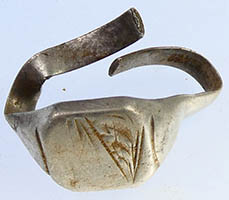 |
 |
| 1500-1650 buckle |
Georgian buckle |
20thC silver signet ring |
19thC livery button |
 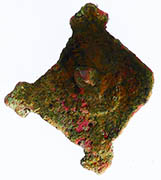 |
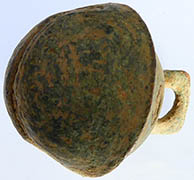 |
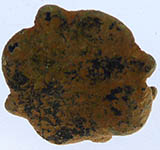 |
| Medieval mount |
18thC crotal bell |
1500-1700 mount |
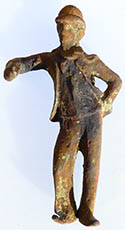 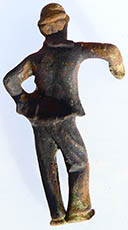 |
 |
 |
| Georgian pipe tamper |
Victorian brooch |
Medieval bronze pot leg |
 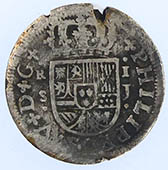 |
 |
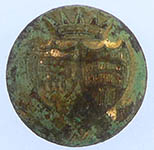 |
1721 Spanish silver coin
SEVILLA 1 REAL PHILIP V
|
The 92nd Highland Regiment was a British infantry regiment raised in 1794 by the Duchess of Gordon with a shilling between her lips. They formed the 2nd battalion of the Gordon Highlanders on its inception in 1881.
Description: 92 within plain inner circle.
Category: Regular Army;
Type of button: Convex 15mm ;
Metal: Copper Alloy silvered; Backmark: EXTRA STRONG PLATED
Date: c1820-1840 |
Victorian corporation button |
 |
 |
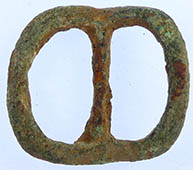 |
 |
| 18thC Royal Artillery button |
18th C Royal Navy button |
1500-1650 buckle |
1500-1650 buckle |
  |
  |
| 1670 Ipswich Essex copper farthing token |
1941 George VI milled silver sixpence |
 |
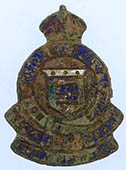 |
 |
| 1500-1700 mount |
WWII Royal Artillery enamelled badge |
1800's 3rd Loyal Militia button
This is the 3rd Reg't of the Essex Local Militia.
Formed march 15th 1809, Disbanded 1816, for the Napoleonic Wars.
Based at Colchester, Lt. Col.Com. John Bawtree.
1st Regiment, Royal Lancashire Militia became the 3rd and 4th (Militia) Battalions of The King's Own Royal Lancaster Regiment. |
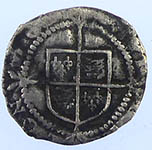  |
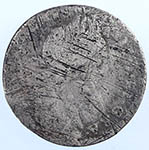 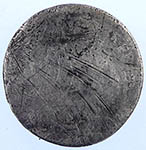 |
| 1580-1 Elizabeth 1st hammered silver penny - Latin cross mint mark |
17th C William III milled silver sixpence |
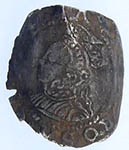  |
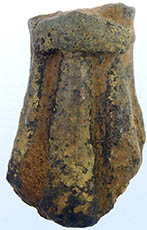 |
 |
| 1560-1 Elizabeth 1st hammered silver penny - martlett mint mark |
Medieval bronze pot foot |
15th C lead token |
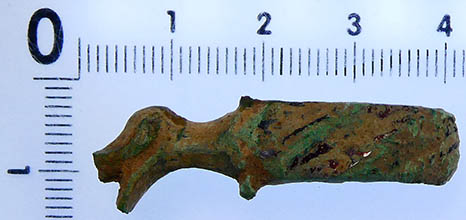
 

|
Saxon animal headed implement - possible small knife handle
Classic black enamel inlay |
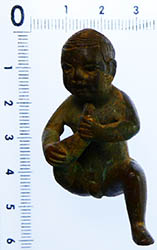 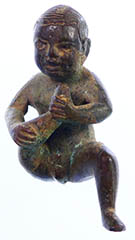 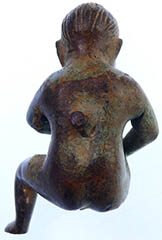
Religious figurine - researching it Krishna as the Divine Child on a Banyan Leaf
?
https://www.sahapedia.org/krishna-divine-child-banyan-leaf-vatapatrasayi
|
 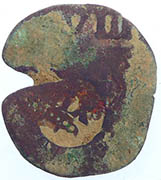 |
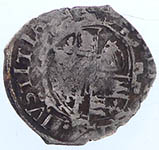 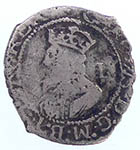 |
| 1677 Spanish 8 Maravedis copper cob |
1640-1 Charles 1st hammered silver penny - star mint mark |
 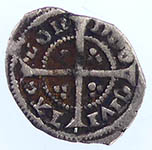 |
 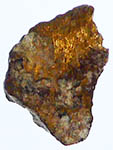 |
1377-1399 Richard II hammered silver farthing - Type 1f
Obv + RICARD REX:ANGLIE
Rev CIVI/TAS/LON/DON - London mint
0.315g, 9.2mm |
Gold nugget
0.302g, 10mm L |
 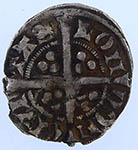 |
  |
1327-1335 Edward III hammered silver penny - Florin type 15, Egg waisted S - Pellet stop after R
Obv +EDWAR R ANG LDNS hYB
Rev CIVI/TAS/LON/DON - London mint |
1279 Edward 1st hammered silver penny
Obv + EDWAR ANGL DNS hYB -Cross moline
Rev CIVI/TAS/DVR/EME -Durham mint
|
 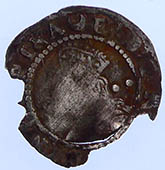 |
 |
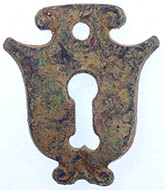 |
| 1587-9 Elizabeth 1st hammered silver half groat - Crescent mint mark |
Army button ? |
Victorian key hole escutcheon |
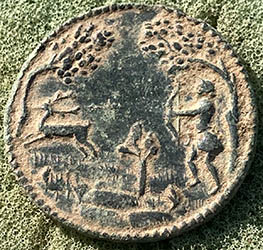 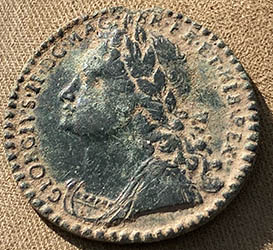
Medal Great Britain George II Indian Peace 1757
Obverse with laureate armored bust left, GEORGIVS II DG MAG BR FR ET HIB REX around. Reverse with Native American hunting scene in forest, deer running with archer's arrow in mid-air.
This could be an amazing discovery
'Wow! Search under peace medal. It is one of the earliest made for Indian trade in America.' Dan
https://coinquest.com/cgi-bin/cq/coins.pl?coin=16774
Summary:
- Original medal (13 known): $50,000 approximately
- Restrike at a later date with original die: $20,000 approximately
- Restrike with broken die: $1000 approximately
- Restrike (about 1960) with new die: $100 if in good condition
- Novelty token or souvenir: $5 or so
Is it an original or a restrike ?????? |
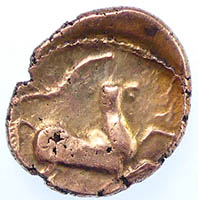  |
10-40 AD Cunobelin Celtic gold stater - reported to museum
5.36g, 19mm |
| |
|
|
 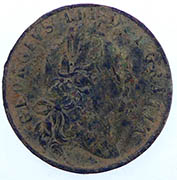 |
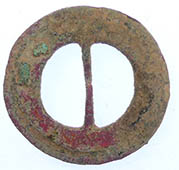 |
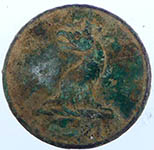 |
| 1797 George III gold guinea gaming token |
Georgian buckle |
19thC livery button |
 |
 |
 |
 |
| 1500-1700 mount |
19thC livery button |
Georgian key |
1500-1700 mount |
 
Medieval gilded riveted bar mount |
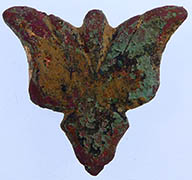  |
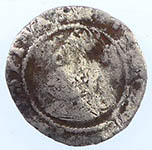 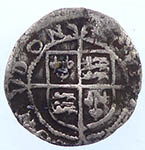 |
| 1500-1700 mount |
16th C Elizabeth 1st hammered silver penny |
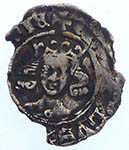 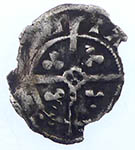 |
 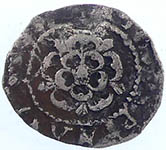 |
1279 Edward 1st hammered silver penny - Annulet on breast
Obv +EDW**DVSx** hYB
Rev CIVI/TAS/ |
1611-12 James 1st hammered silver penny - mullet mint mark |
  |
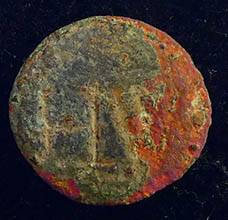 
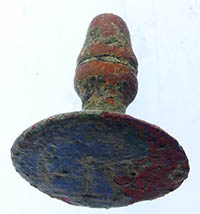
|
| 1247 Henry III hammered silver voided long cross half penny |
17thC seal matrix - HW |
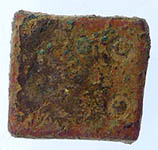 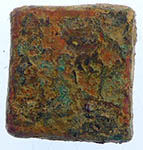 |
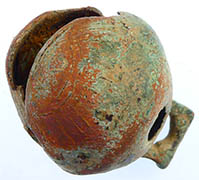 |
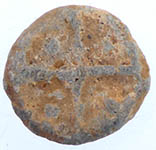 |
| 18thC bullion weight |
18thC crotal bell |
15thC lead token |
   |
| Medieval strap end |
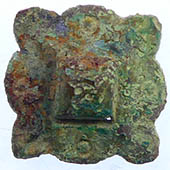 |
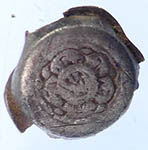 |
 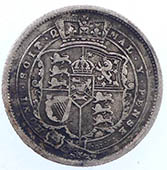 |
| Medieval mount |
18thC silver Royal Navy button |
1818 George III milled silver shilling |
 |
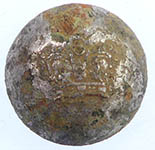 |
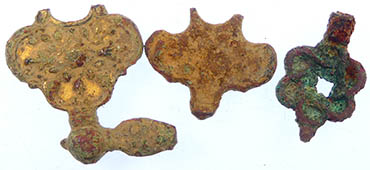 |
| Unknown Navy Yacht club button |
Victorian Post Office button |
Georgian watch winders |
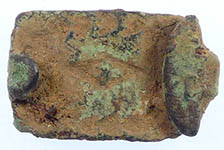 |
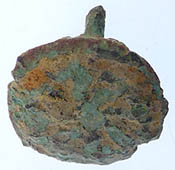 |
 |
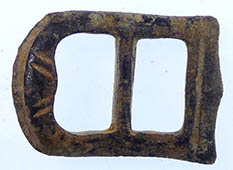 |
| 18thC clog fastener |
16thC Tudor mount |
Georgian spur fitting |
1500-1650 Buckle |
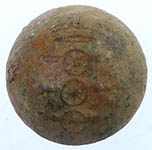 |
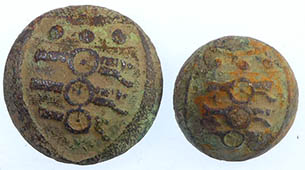 |
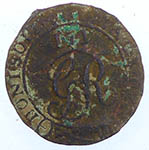 |
 |
| Post 1831 version - three cannons pointing left with the Royal crown over- The design was changed in 1840 with the addition of the 'Ubique' scroll below the lower cannon |
18thC Royal Artillery buttons |
George III Engineers button
Honi soit qui mal y pense (Old French: shame upon him who thinks evil of it) |
Art deco button |
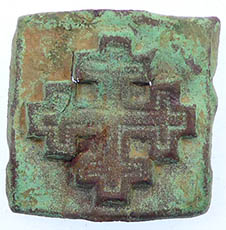
Great relic find - Templar badge still in the mould
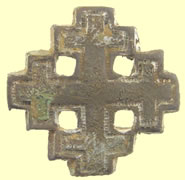 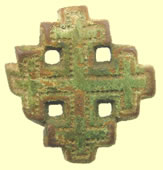
Previous trimmed versions
Medieval badges Ref Mitchiner p244 939 - 941
 'A badge for a Knight of the Order of the Holy Sepulchre in bronze and dating somewhere around C13/14th possibly very slightly later . This is a very scarce item and it relates to The Equestrian Order of the Holy Sepulchre of Jerusalem being a Catholic chivalric order of Knighthood that traces its roots to Godfrey of Bouillon, principal leader of the First Crusade. According to reliable sources in the Vatican and Jerusalem, it began in historical reality as a mixed clerical and lay confraternity (association) of pilgrims which gradually grew around the most central of the Christian holy places in the Middle East, the Holy Sepulchre or the tomb of Jesus Christ.This would have been a pin for a member of the order , there is a mark on the reverse where the original pin would have been fixed ' 'A badge for a Knight of the Order of the Holy Sepulchre in bronze and dating somewhere around C13/14th possibly very slightly later . This is a very scarce item and it relates to The Equestrian Order of the Holy Sepulchre of Jerusalem being a Catholic chivalric order of Knighthood that traces its roots to Godfrey of Bouillon, principal leader of the First Crusade. According to reliable sources in the Vatican and Jerusalem, it began in historical reality as a mixed clerical and lay confraternity (association) of pilgrims which gradually grew around the most central of the Christian holy places in the Middle East, the Holy Sepulchre or the tomb of Jesus Christ.This would have been a pin for a member of the order , there is a mark on the reverse where the original pin would have been fixed '
|
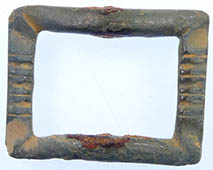 |
 |
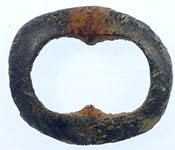 |
 |
| Georgian buckle |
1500-1700 mount |
Georgian buckle |
20thC Eagle mount |
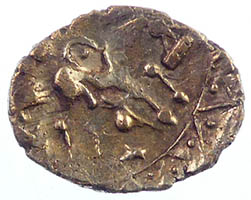 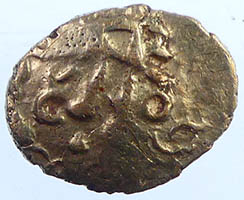
Trinovantes British G “Clacton” quarter, Hobbs 192 Celtic gold 1/4 stater 50BC - reported to museum
Chris Rudd 23.41 Clacton de Jersey - Classed as scarce
1.34g,15.1mm |
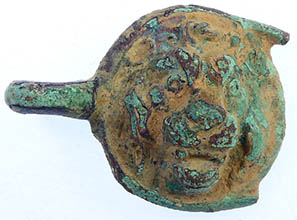 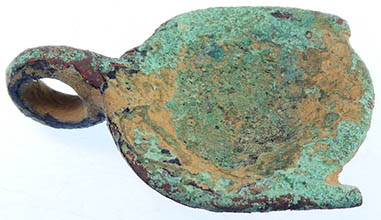
Georgian Lion faced copper clasp |
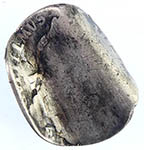 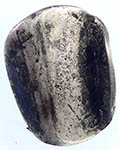 |
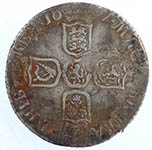 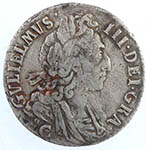 |
| 17thC William III milled silver sixpence- love token |
1697 William III milled silver sixpence |
 |
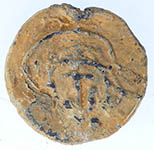 |
 |
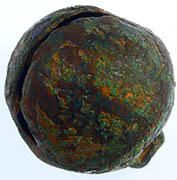 |
| 19thC livery button |
Early medieval lead token |
19thC livery button |
18thC crotal bell |
 |
 |
 |
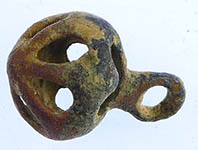 |
| RN Capt / Commander - 1843 |
| RN Lietenant - 1843 |
| RN Master - 1843 |
|
18thC Royal Navy button |
Georgian leg winder |
16thC Tudor button |


|
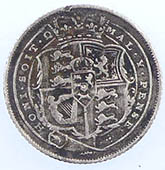  |
Georgian monogrammed silver spoon - Maker GG
George Grey 1797 |
1818 George III milled silver sixpence |
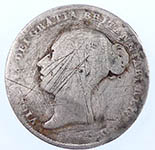 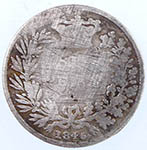 |
  |
| 1845 Victoria milled silver sixpence |
|
|
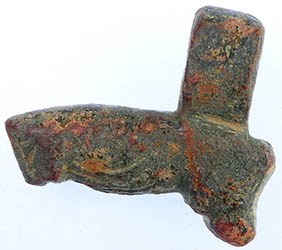   |
| Medieval zoomorphic bucket handle mount - fish head |
  |
 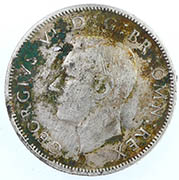 |
| 1942 George VI milled silver six pence |
1945 George VI milled silver florin (24 pence) |
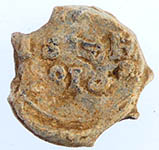 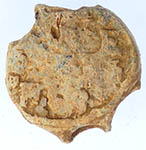 |
 |
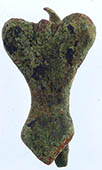 |
| 1816 Russian lead bale seal |
One piece Navy buttons
HONI SOIT QUI MAN Y PENSE
PACKET
1800 -1810
RN packet services |
1500-1700 mount |
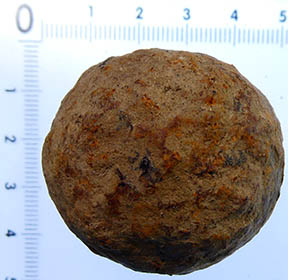 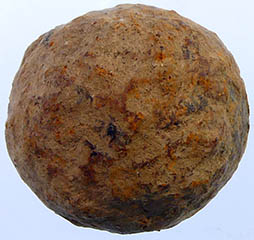
1640's Civil War Iron cannon ball
40mm dia, 211g, 7.45 oz - 1/2 pounder
Robinet
 
1640's Civil War Iron cannon ball
29mm
90g, 3.18oz- 1/4 pounder |
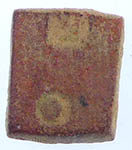 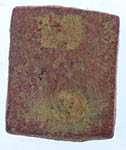 |
 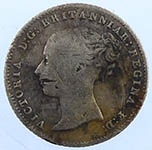 |
| 18th C bullion weight - Lion mint mark |
1844 Victoria milled silver four pence |
 |
 |
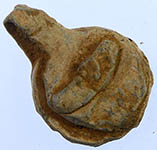 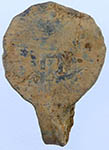 |
The 92nd Highland Regiment was a British infantry regiment raised in 1794 by the Duchess of Gordon with a shilling between her lips. They formed the 2nd battalion of the Gordon Highlanders on its inception in 1881.
Description: 92 within plain inner circle.
Category: Regular Army;
Type of button: Convex 15mm ;
Metal: Copper Alloy silvered; Backmark: EXTRA STRONG PLATED
Date: c1820-1840 |
18th clothing fastener |
Post medieval lead cloth seal |
 |
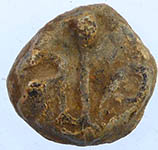 |
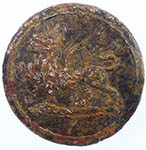 |
 |
| Medieval buckle |
17thC lead token |
19th C livery button |
1500-1700 mount |
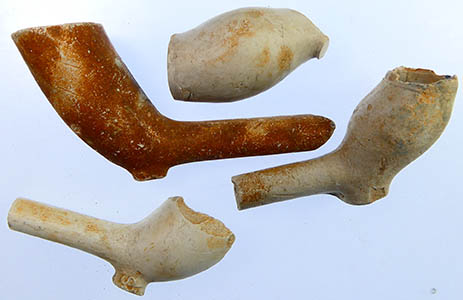 |
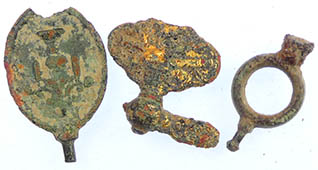 |
| Pipe bowls |
Georgian watch winders |
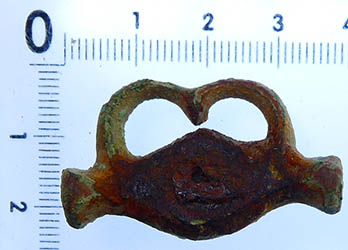 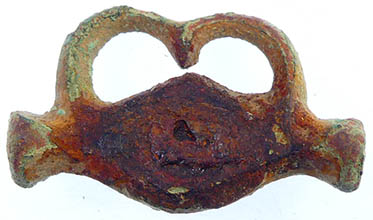 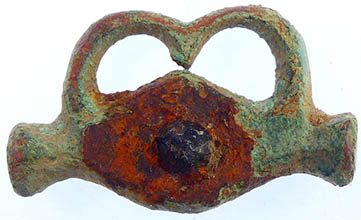 |
| Interesting early harness guide - researching it |
 |
|
 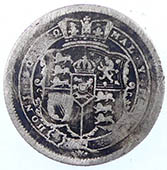 |
| Medieval lead token |
|
1817 George III milled silver shilling |
 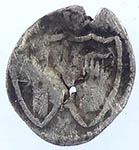 |
 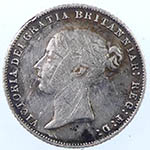 |
| 1649 Commonwealth hammered silver half penny |
1867 Victoria milled silver sixpence |
 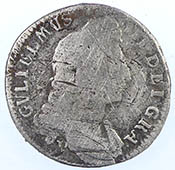 |
  |
| 1697 William III milled silver shilling |
1578 Elizabeth 1st hammered silver three pence |
 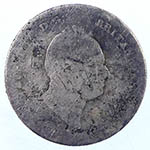 |
  |
| 1836 William IV milled silver four pence |
1834 William IV milled silver sixpence |
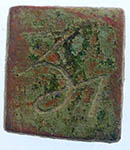 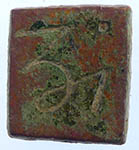 |
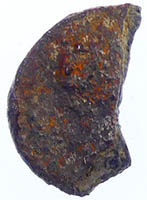 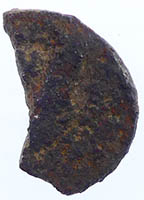 |
| 18thC apothecary weight |
Crusty silver Roman coin |
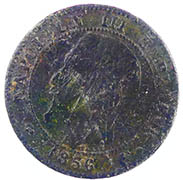 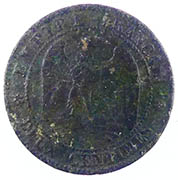 |
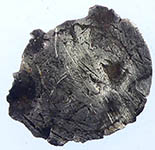 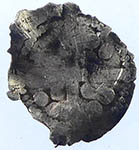 |
| 1856 Napoleon III milled copper centimes coin |
Medieval hammered silver long cross penny |
 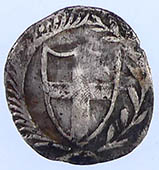 |
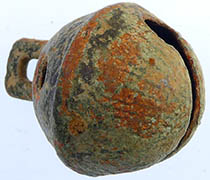 |
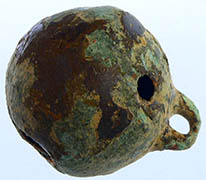 |
| 1649 Commonwealth hammered silver half groat |
18th C crotal bell |
18th C crotal bell |
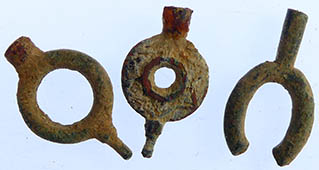 |
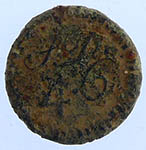  |
| Georgian watch winders |
1770's coin weight - 4 shillings and 6 pence
Obv SD 4 6 |
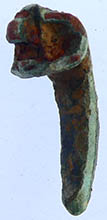  |
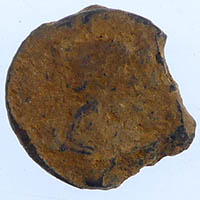 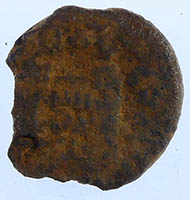 |
| 2nd C Roman fibular brooch |
Crusty silver Roman coin |
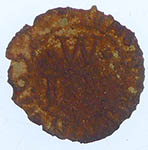 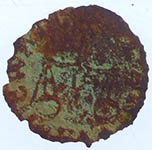 |
  |
| 1652 John Vanewall of Harwich Essex , (W/IM) hammered copper trade farthing |
1890 Victoria milled silver sixpence |
 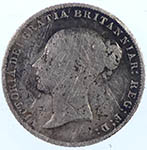 |
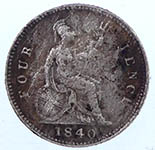 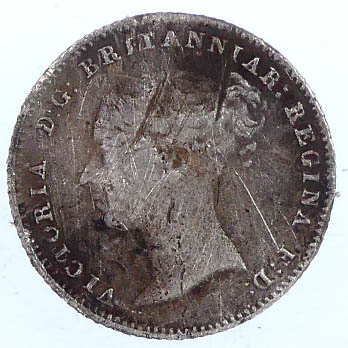 |
| 1865 Victoria milled silver sixpence |
1840 Victoria milled silver four pence |
 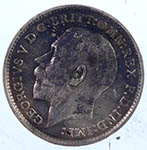 |
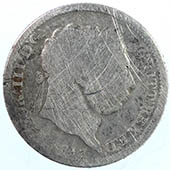  |
| 1911 George V milled silver three pence |
1817 George III milled silver shilling |
 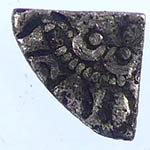 |
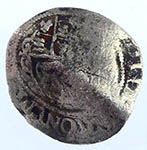  |
| 1247 Henry III hammered silver voided long cross farthing |
1625 Charles 1st hammered silver penny |
 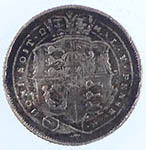 |
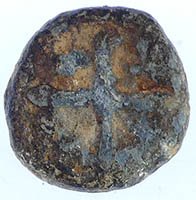 |
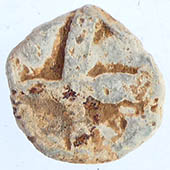 |
| 1820 George III milled silver sixpence |
Medieval trade weight |
Medieval gaming token |
  |
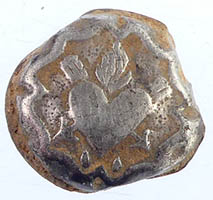 |
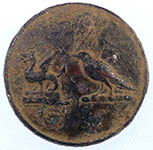 |
| 1216 Henry III hammered silver short cross half penny |
17thC Charles II silver button - reported as treasure to museum |
19thC livery button |
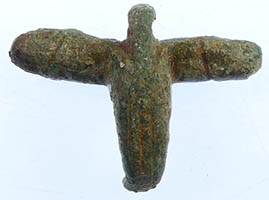 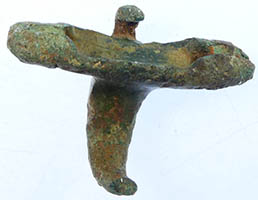 |
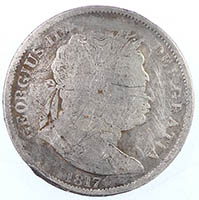 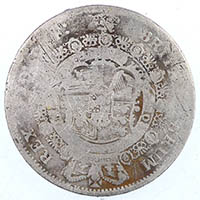 |
| 2ndC fibular brooch |
1817 George III milled silver half crown (30 pence) |
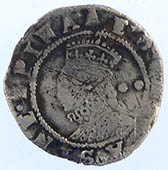  |
 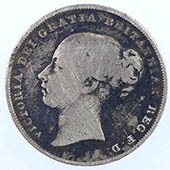 |
| 1582-3 Elizabeth 1st hammered silver half groat - bell mint mark |
1850 Victoria milled silver shilling |
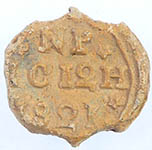 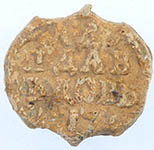 |
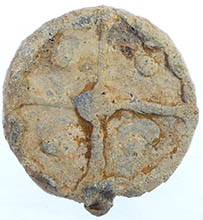 |
 |
| 1821 Russian lead bale seal |
Huge medieval lead trade weight |
Britain's Merchant Navy
Generic Design Issue
In use 1900 - 2000's
Bliss Bros Ltd
Rd 665050 |
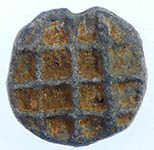 |
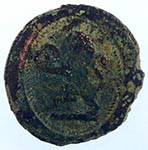 |
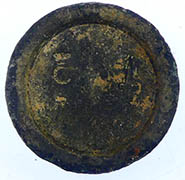 |
|
| 17thC lead token |
MN - G & J Burns Ltd In use 1842 - 1922 |
17thC Charles trade weight - Crown C cipher |
|
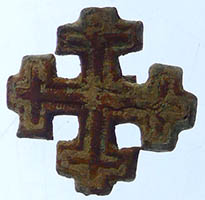 |
Medieval badges Ref Mitchiner p244 939 - 941
 'A badge for a Knight of the Order of the Holy Sepulchre in bronze and dating somewhere around C13/14th possibly very slightly later . This is a very scarce item and it relates to The Equestrian Order of the Holy Sepulchre of Jerusalem being a Catholic chivalric order of Knighthood that traces its roots to Godfrey of Bouillon, principal leader of the First Crusade. According to reliable sources in the Vatican and Jerusalem, it began in historical reality as a mixed clerical and lay confraternity (association) of pilgrims which gradually grew around the most central of the Christian holy places in the Middle East, the Holy Sepulchre or the tomb of Jesus Christ.This would have been a pin for a member of the order , there is a mark on the reverse where the original pin would have been fixed ' 'A badge for a Knight of the Order of the Holy Sepulchre in bronze and dating somewhere around C13/14th possibly very slightly later . This is a very scarce item and it relates to The Equestrian Order of the Holy Sepulchre of Jerusalem being a Catholic chivalric order of Knighthood that traces its roots to Godfrey of Bouillon, principal leader of the First Crusade. According to reliable sources in the Vatican and Jerusalem, it began in historical reality as a mixed clerical and lay confraternity (association) of pilgrims which gradually grew around the most central of the Christian holy places in the Middle East, the Holy Sepulchre or the tomb of Jesus Christ.This would have been a pin for a member of the order , there is a mark on the reverse where the original pin would have been fixed '
|
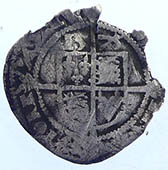  |
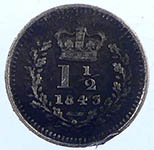  |
| 1575 Elizabeth 1st hammered silver three pence |
1845 Victoria milled silver one and a half pence
Colonial issue |
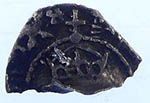 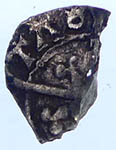 |
  |
1485 Henry VII hammered silver half penny - Cross furchee - Single arched crown
Obv HE *** REX |
1279 Edward 1st hammered silver penny
Obv EDW *********** |
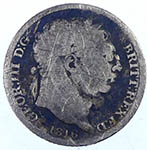 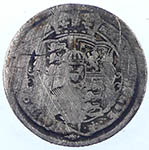 |
  |
| 1816 George III milled silver sixpence |
1575 Elizabeth 1st hammered silver sixpence |
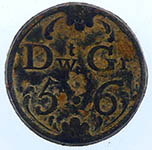 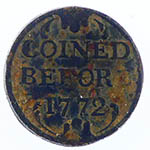 |
  |
| 1770's coin weight - 5 pennyweights and 6 grains |
|
|
  |
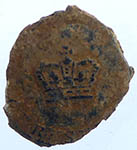 |
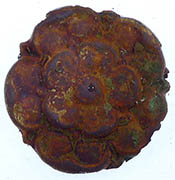 |
| 16thC Elizabeth 1st hammered silver 3 pence |
18thC Peter Army button |
Georgian mount |
 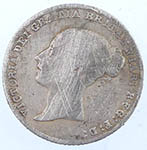 |
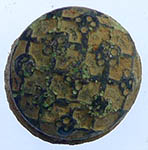 |
 |
| 1864 Victoria milled silver sixpence |
Georgian button |
18thC toy cannon |
 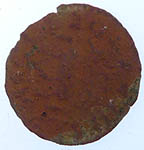 |
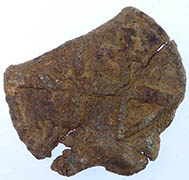 |
 |
| 17thC Joseph Gleeson of Dedham Essex hammered copper trade farthing |
Medieval lead token |
15th C lead token |
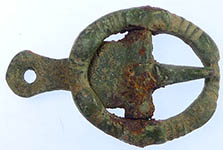 |
 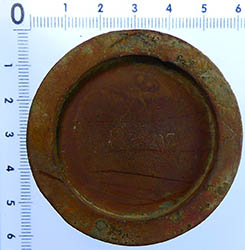 |
| Georgian spur buckle |
Huge Victorian 8oz (1/2 lb) trade weight |
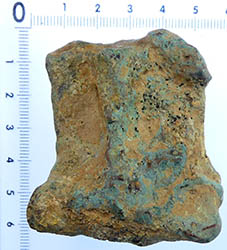  |
 |
 |
| Largest bronze medieval pot foot I have seen |
Unknown button
MMLB ? |
Interesting 17thC lead token - man sitting at weaving loom |
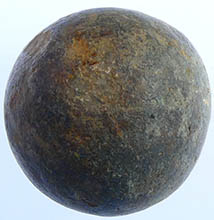 
16thC Stone cannon ball |
 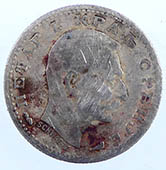
1915 Petar I King of Serbia |
Obverse
Portrait of Petar I right
Script: Cyrillic
Lettering:
ПЕТАР I. КРАЉ СРБИЈЕ
SCHWARTZ
Translation:
Petar I King of Serbia
Schwartz
Engraver: Stefan Schwartz
Reverse
The denomination with a crown above and the date below
Script: Cyrillic
Lettering:
50
ПАРА
1915
Translation:
50
Para
1915
Edge
Reeded
Mints
|
 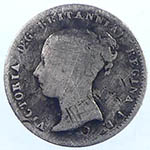 |
 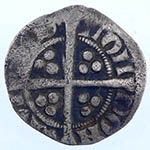 |
| 1845 Victoria milled silver four pence |
1327 Edward III hammered silver florin penny
Obv +EDWAR R ANGL DNS YB
Rev CIVI/TAS/LOND/DON - London mint |
 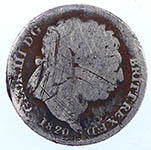 |
 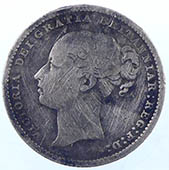 |
| 1820 George III milled silver sixpence |
1883 Victoria milled silver six pence |
| |
 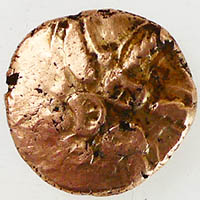
50 BC Addedomarus Celtic gold stater - reported to museum
Addedomarus (sometimes written Aθθedomarus on coins) was a king of south-eastern Britain in the late 1st century BC.
5.52g,16.65mm |
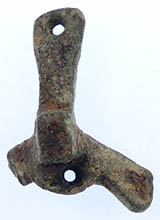 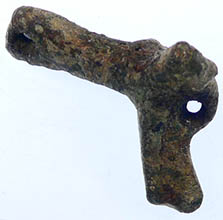 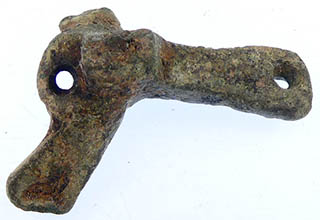 |
| Roman prick spur |
  |
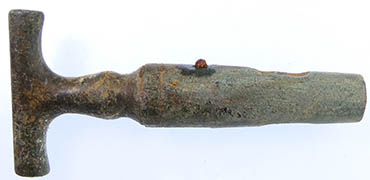 |
| 1697 William III milled silver sixpence |
Georgian barrel tap spigot |
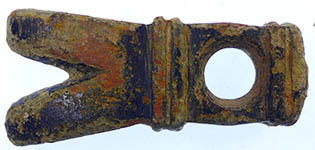

|
 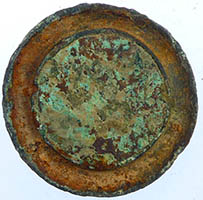 |
Post-Medieval cast copper-alloy pipe tamper in the shape of a claw hammer head probably dating to the 17th century.
FindID: 791002
Old ref: KENT-3D35DE
Filename: KENT3D35DE.jpg |
Medieval mount - Edward 1st type crown inlay |
 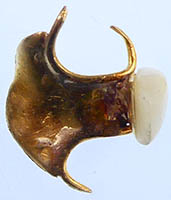 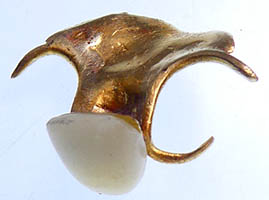
20thC gold denture plate and single tooth |
  |
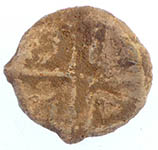 |
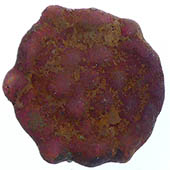 |
1279 Edward 1st hammered silver penny
Obv +EDW **AN hYB
Rev CIVI/TAS/LON/DON - London mint |
15th C lead token |
16th C mount |
 |
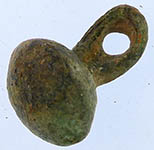 |
  |
| 16th C Tudor button |
16th C Tudor button |
1839 Victoria milled silver four pence |
 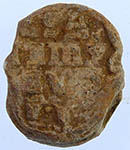 |
 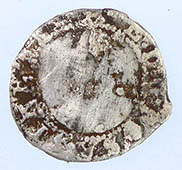 |
| 1815 Russian lead bale seal |
1594-6 Elizabeth 1st hammered silver half groat - Wool pack mint mark |
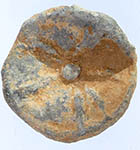 |
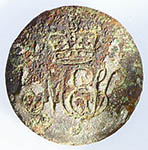 |
 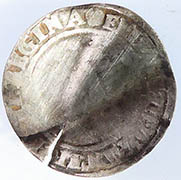 |
| 15th C lead token |
MEV regiment ? |
1565 Elizabeth 1st hammered silver sixpence - Rose mint mark |
 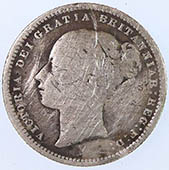 |
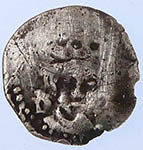 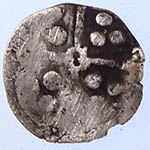 |
| 1872 Victoria milled silver shilling |
1461- 1470 Edward IV milled silver penny - B at centre of reverse cross - D by the neck
Class VIIi Durham mint |
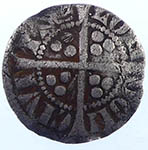  |
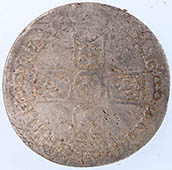 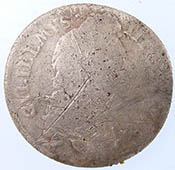 |
1279 Edward 1st hammered silver penny
Obv +EDWR ANGL DNS hYB
Rev CIVI/TAS/LON/DON - London mint |
1696 William III milled silver shilling |
| |
|
|
|
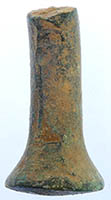 |
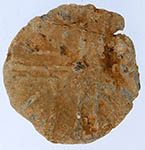 |
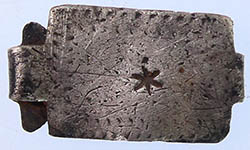 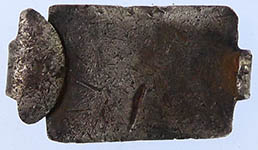 |
| Medieval pot leg |
15th C lead token |
18th C silver clog fastener |
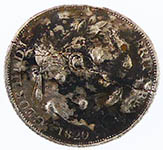  |
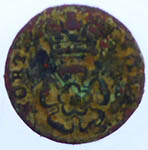 |
| 1820 George III milled silver sixpence |
Unknown Army button |
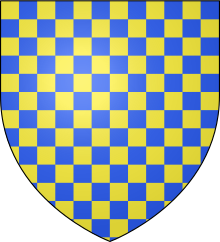
 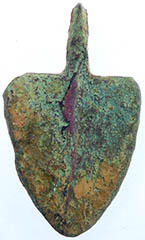 
Medieval heraldic shield pendant
John de Warenne (June 1286 - June 1347), 7th Earl of Surrey, was the last Warenne earl of Surrey.
|
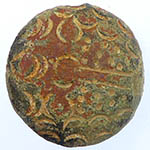 |
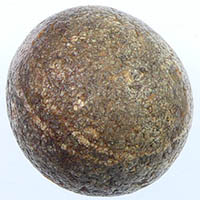 |
 |
|
| 17th button |
16thC stone cannon ball |
16thC Snake buckle |
|
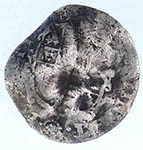  |
 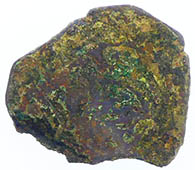 |
| 1625 Charles 1st hammered silver penny |
1677 Spanish 8 Maravedis copper cob |
 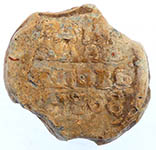 |
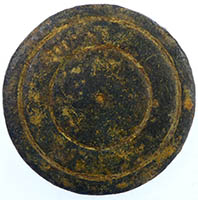  |
| 1775 Russian lead bale seal |
16thC trade weight |
  |
 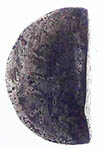 |
| 1582-3 Elizabeth 1st hammered silver half groat - bell mint mark |
1550's Venetian milled silver soldino |
 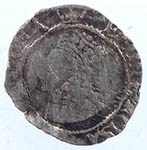 |
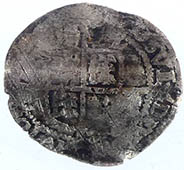  |
| 1567-70 Elizabeth 1st hammered silver penny - Coronet mint mark |
16th Elizabeth 1st hammered silver three pence |
  |
 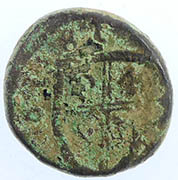 |
1247 Henry III hammered silver voided half penny
Rev LVD - London mint |
Unknown coin weight |
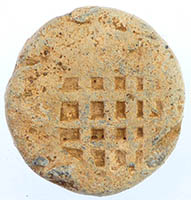 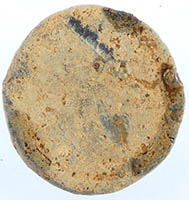 |
  |
| Medieval lead trade weight - Portcullis design |
One piece Navy buttons
HONI SOIT QUI MAN Y PENSE
PACKET
RN - Packet Service
( Mail & Supplies Delivery )
c.1800-1811
Firmin & Co |
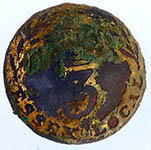 |
3rd Essex Local Militia
'3rd Essex Local Militia gilt (b/m: Charles Jennens. London).
This is the 3rd Reg't of the Essex Local Militia.
Formed march 15th 1809, Disbanded 1816, for the Napoleonic Wars.
Based at Colchester, Lt. Col.Com. John Bawtree.
Description: 3 within circle surrounded by ESSEX LOCAL MILITIA
Category: Local Militia;
Type of button: Slightly convex;
Metal: Copper Alloy, gilded; Backmark: S FIRMIN STRAND;
Date: 1809-1816 |
 |
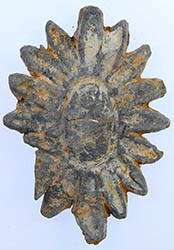 |
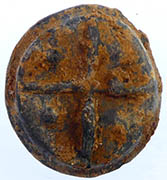 |
 |
| Georgian buckle |
17thC lead carriage mount |
Medieval lead trade weight |
Georgian buckle |
 |
 |
 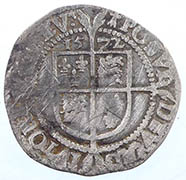 |
| Honourable East India Company |
18th C silver button |
1572 Elizabeth 1st hammered silver six pence |
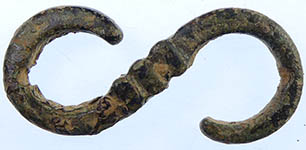 |
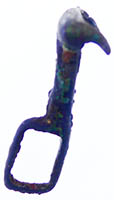 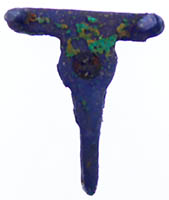 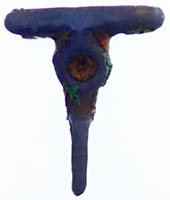 |
| Medieval S clasp |
Medieval hanger |
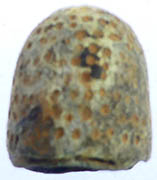  |
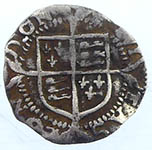 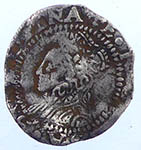 |
| Medieval thimble |
1560 -1 Elizabeth hammered silver penny - Cross Crosslette mint mark |
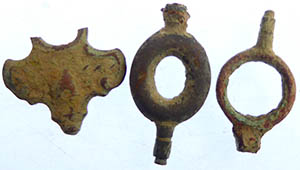 |
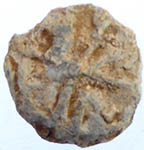 |
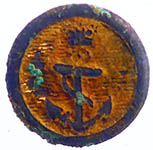 |
| Georgian watch winders |
15th lead token |
RN Capt / Commander - 1812
RN Lieutenant - 1812
RN Midshipman - 1812 |
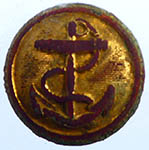 |
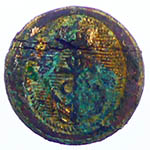 |
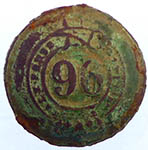 |
| 1900's Generic merchant navy button |
RN Capt / Commander - 1812
RN Lieutenant - 1812
RN Midshipman - 1812 |
96th (Queen's Own Germans) Regiment of Foot
1824 96th Regiment of Foot
raised at Manchester
Description: 96 crowned within buckled strap with order of garter motto.
Category: Regular Army;
Type of button: Convex 19mm ;
Metal: Copper Alloy silvered; Backmark: CHARLES JENNENS LONDON (with PoW crest)
Date: 1830-1881 |
 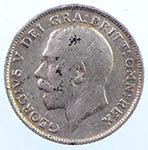 |
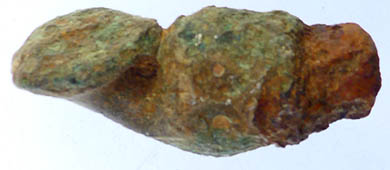
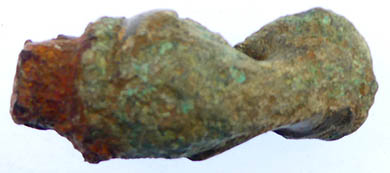
|
| 1915 George V milled silver sixpence |
Medieval bucket handle mount |

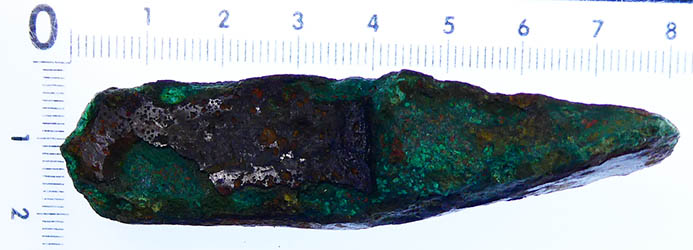


Small 850 BC Bronze Age axe |
  |
 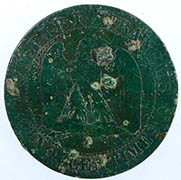 |
| 1920 George V milled silver sixpence |
1861 Napoleon III milled copper coin |
 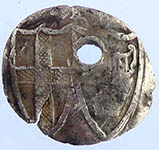 |
 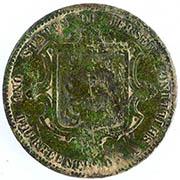 |
| 1649 Commonwealth hammered silver penny |
1866 Victoria Jersey one thirteenth of a shilling copper coin |
 |
 |
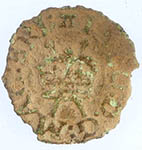  |
| 19th C livery button |
WWI Hertfordhire Yeomanry regiment cap badge |
1614-25 James 1st hammered copper farthing
General type Obv. IACO D G MAG BR (IT)
Rev. FRA ET HIB REX |
 |
 |
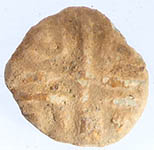 |
| Georgian watch winders |
1604-19 James 1st gold Angel coin weight - 2nd coinage, revalued
Obv Crown XI S |
15th C lead token |
  |
 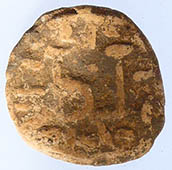 |
| 1798 Russian lead bale seal |
17th C lead token |
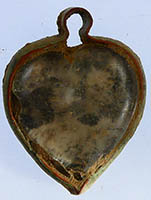 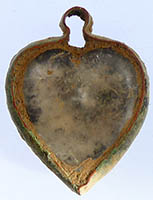 |
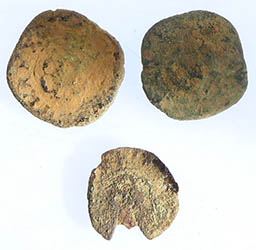 |
| Neat relic - 1901 Edward VII King and Queen photograph under glass pendant |
1634 Charles 1st hammered copper rose farthing |
  |
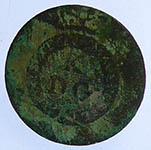 |
 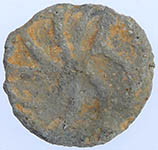 |
| Victorian pipe tamper |
19thC Kings dragoon guards button |
17th C lead token |
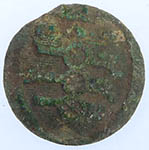 |
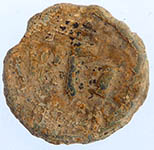 |
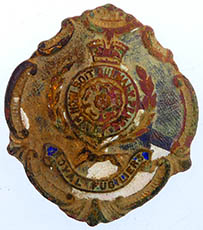 |
  |
| 18th C Royal Artillery button |
17th C lead token |
George V Royal Engineers sweetheart badge |
Georgian gilded watch winder |
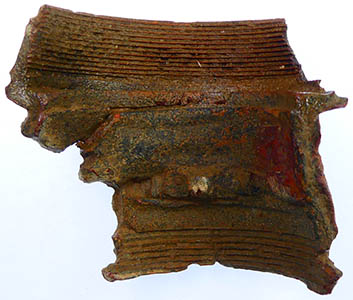 
Huge WWII flack shell fragment with altitude setting gradiants showing |
 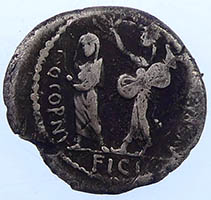
Stunning BC Roman silver coin sent for ID - mega rare ID
Roman Republican/Imperatorial AR denarius
by: Q. Cornuficius, Imperator, 43-42 BCE, killed in battle, 42 BCE
Struck in: Utica(?), spring-summer 42 BCE
Obverse: Head of Ceres left, hair wreathed in grain-ears
Reverse: Q CORNV – FICI – [AVGVR IMP]
Cornuficius, in priestly attire, standing facing, Juno Sospita crowning Cornuficius with wreath
standing left holding spear and shield, crow on shoulder RRC 509/5; CRI 231; BMCRR, Africa 27; Babelon/RSC Cornuficia 3
Sear, David, SRCV, Millennium Edition, vol. 1 (pub. AD 2000), p 278, #1453
Chris – This is a legitimately RARE piece and historically important, etc.
Rare coins have increased enormously in retail value since 2000, however a higher grade would have increased more than a visibly worn (if still attractive) piece like this.
Frankly, I have no idea what this would sell for now. I’ve never cataloged one of these before.
If I had a $ for every common coin I’ve heard touted as “rare”, “extremely rare” etc, I think I could afford to buy this denarius – it’s really rare and sought-after.
Mark Lehman |
 |
 |
 |
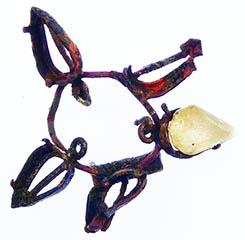 |
| 15th C casket key |
Georgian shoe buckle |
Georgian lead tobacco jar lid handle |
Victorian copper jewelry item with single stone remaining |
 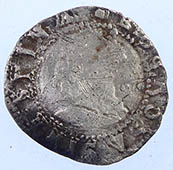 |
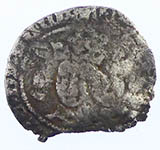 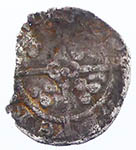 |
| 1592-5 Elizabeth 1st hammered silver half groat - Tun mint mark |
Irish 1470-73 Edward IV hammered silver penny
Quadrefoil with at centre of reverse cross
Rev LAD/EDR - Drogheda mint - Ireland |
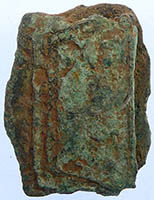 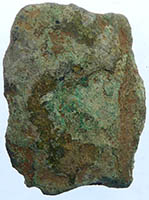 |
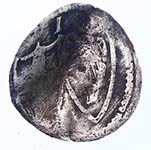 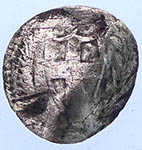 |
| Medieval buckle chape |
1649 Commonwealth hammered silver penny |
 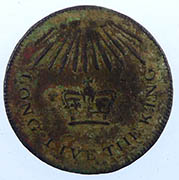 |
 |
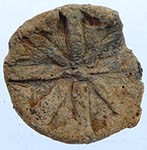 |
| 1759-1809 George III 50th year of reign medallion |
18th C toy cannon |
15th C lead token |
  |
 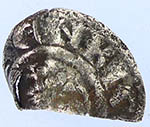 |
| Medieval lead seal |
1216 Henry III hammered silver short cross half penny |
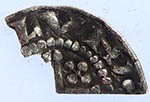 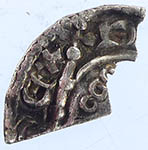 |
  |
1216 Henry III hammered silver short cross half penny
Rev LVN - London mint |
1247 Henry III hammered silver voided long cross farthing |
  |
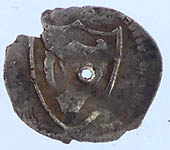 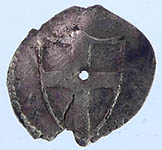 |
1279 Edward 1st hammered silver penny
Obv EDW***** |
1649 Commonwealth hammered silver half penny |
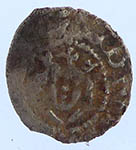 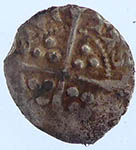 |
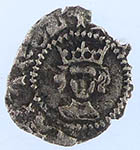 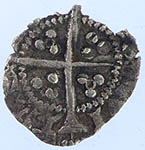 |
1279 Edward 1st hammered silver half penny
Obv EDW ***
Rev CIVI/TAS/***** |
1422-61 Henry VI hammered silver half penny - annulet issue - two annulets in oppositing quadrants
Obv hENRIC REXx ANGL
Rev CIVI/TAS/*** |
 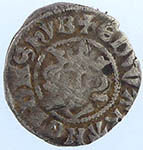 |
 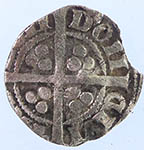 |
1279 Edward 1st hammered silver penny
Obv +EDWAR ANGL DNS hYB
Rev CIVI/TAS/LON/DON - London mint |
1279 Edward 1st hammered silver penny
Obv +EDWR' ANGL DNS hYB
Rev CIVI/T***N/DON - London mint |
 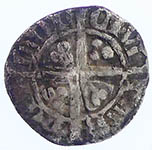 |
 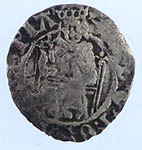 |
1377-1399 Richard II hammered silver half penny
Obv + RICARD.REX ANGL
Rev CIVI/TAS/LON/DON - London mint |
1526 - 1544 Henry VIII hammered silver sovereign
penny - Star both sides, radiant star Obv only
CD besides shield - Bishop Cuthbert Tunstall |
 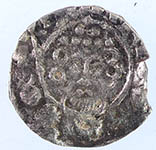 |
  |
1199-1216 John hammered silver short cross penny - Class 5c
Obv hENRICVS REX
Rev +SAMVEL.ON.C ** - Moneyer Samvel of Canterbury mint |
Medieval hammered silver long cross penny
Quadrefoil and pellet at centre of the reverse cross - York mint |
 
Mega rare copper |
Medal Great Britain George II Indian Peace 1757
'Wow! Search under peace medal. It is one of the earliest made for Indian trade in America.' Dan
https://coinquest.com/cgi-bin/cq/coins.pl?coin=16774
|
  |
1st C Roman silver coin sent for ID
Roman Imperial AR denarius
Geta, as Caesar, AD. 195-198
Mint of Rome, AD 202
Obverse: M SEPT GETA CAES PON
bare-headed draped and cuirassed bust of Geta, Caesar right, seen from behind
Reverse: SECVRIT IMPERII Securitas seated left holding globe and resting left elbow on throne
RIC IV 20; RSC 183a; SRCV 7169
Mark
|
 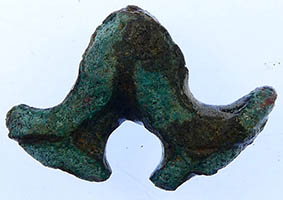 
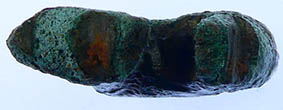
|
| Uknown Bronze Age widget ? |
 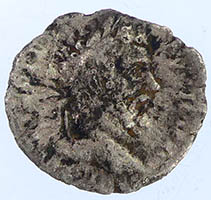 |
1st C Roman silver coin sent for ID
Not much left here for me to go on for details – I can tell you what it is, but can’t give you any catalog #
Roman Imperial AR Denarius
Septimius Severus, AD 193-211
(probably) mint of Laodicea
Obverse: legend illegible, laureate head of Severus right
Reverse: legend illegible, Fortuna standing facing, head left, holding rudder and cornucopiae
Mark Lehman
|
 |
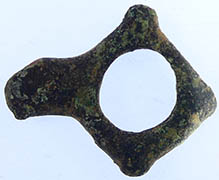 |
| Purse bar ? |
c10th C Saxon hanress cheek piece |
 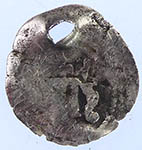 |
  |
| Medieval hammered silver long cross penny |
1st C Roman silver coin sent for ID
Roman Imperial AR Siliqua (probably a single siliqua – no metrics and more than one possible denomination)
Julian II (so-called “apostate” or “philosopher”) AD 360-363
Mint mark illegible or missing, could be Lugdunum, Constantia/Arles, Constantinople or Antioch (if it’s a single siliqua) date could be either 361/2 or 362/3 AD (if it’s a European mint, more likely the earlier date; if an Asian mint, later date,)
Obverse: D N FL CL IVL[I – ANVS P F AVG] diademed, draped and cuirassed bust of Julian right
Reverse: [V]OT / X / [MV]LT / XX in four lines within laurel wreath.
RIC VIII (uncertain, must have mint to assign an RIC or RSC #); cf. RSC 146a-148d;
cf. SRCV 19123-19128
Mark
|
   
Medieval heraldic shield pendant
13th C Magna Carta Norfolk Suffolk Heraldry Coat of arms |
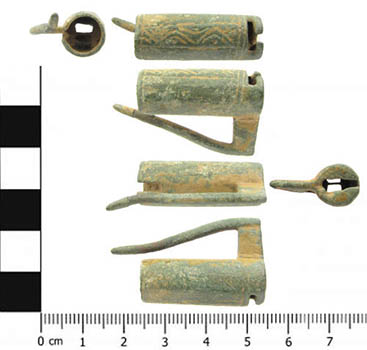
Unique ID: SWYOR-3D0FA8
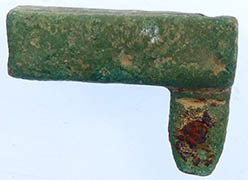  
|
| A Medieval barrel padlock. A cast copper alloy barrel padlock case of 12th or 13th century date. |
 |
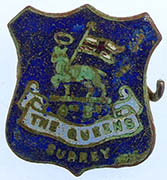 |
  |
 |
| 16thC Tudor seal spoon handle |
WWII The Queens regiment Surry sweetheart badge |
16th C Tudor gilded clothing fastener |
1500-1700 mount |
  |
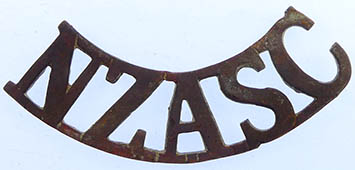 |
| Medieval strap end |
NZASC badge
WWII New Zealand Army service corp |
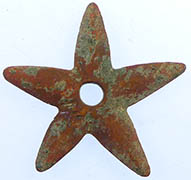 |
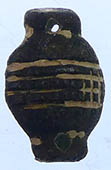 |
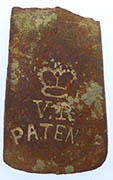 |
 |
| Medieval spur rowel |
Roman mount |
Victoria safe key hole cover |
Roman mount |
 |
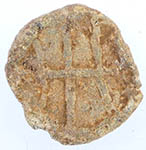 |
 |
 |
| Medieval pin head |
17thC lead token |
Teddy Tail League badge is probably 1930s, the two main makers of these badges were J R Gaunt of London and Roden of London.
'Teddy Tail the cartoon mouse and main character of the Teddy Tail League delighted children with his stories for 40 years. He is distinguished by the suit he wears and always shown with a knot in his tail. A somewhat mischievous guy he loved the occasional prank, parties and getting into all sorts of adventures with his friends. Teddy Tail lived in the little village of Whiskertown whose friend included Dr. Beetle, Piggy, Kitty Puss the cat and Dougie the duckling amongst others.
Teddy Tail’s main claim to fame is that his is the first cartoon strip regularly featured in a British newspaper. His first appearance was in the Daily Mail on the 5th April 1915 and continued until 1962. He disappeared in 1942, a victim of wartime paper shortages and post-war austerity but was revived in 1949 to the delight of his so many fans'. |
Medieval spur rowel |
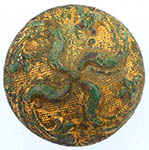 |
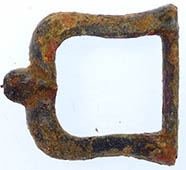 |
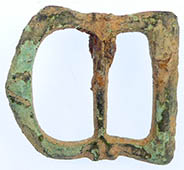 |
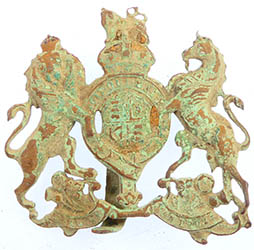 |
| Georgian button |
Post medieval cast copper alloy asymmetrical buckle frame, some with with a pointed knop at the end of the loop
The buckle dates from c.1575 - 1700 |
A complete cast copper alloy buckle of post-medieval date. The buckle is a double loop asymmetrical shape
Circa 1575- 1700 |
1942 - The General Service Corps of the British Army. |
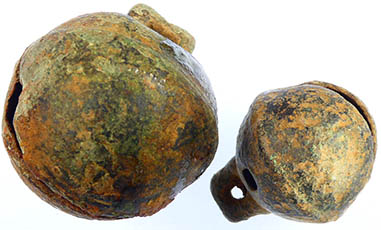 |
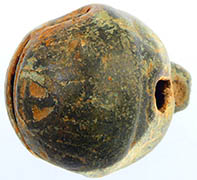 |
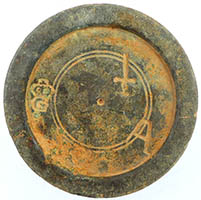 |
| 18th C crotal bells |
18th C crotal bell |
Large Georgian trade weight - Crown G cipher |
 |
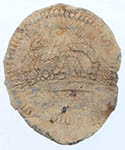 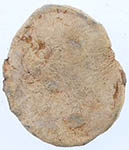 |
 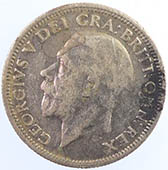 |
| c1820-1855 - 89th Regiment of foot button |
17thC French crown on lead token |
1929 George III milled silver shilling |
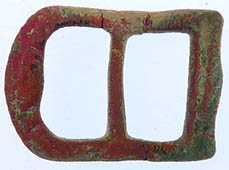 |
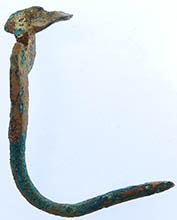  |
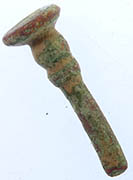 |
A complete cast copper alloy buckle of post-medieval date. The buckle is a double loop asymmetrical shape
Circa 1575- 1700 |
2ndC Roman fibular brooch |
16thC Tudor seal spoon handle |
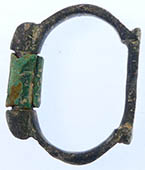 |
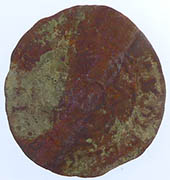 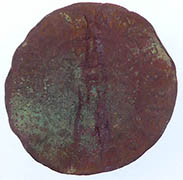 |
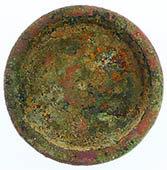 |
| 1250- 1400 buckle |
1586 Hans Krauwincel II Rose orb Jeton
HANNS KRAVWINCKEL IN NVRENB
|
Georgian trade weight |
  
British Celtic 'Pierced Bulb' Toggle Fastener
Circa 1st century BC-1st century AD. A cast fitting in the form of a pierced bulb with medial indent extending to a thick, round-section discoid terminal. Such fittings were used as toggles to fasten garments, passing through a slit or loop. Reference: cf. looped variants in Murawski, P. Benet's Artefacts of England and the United Kingdom
|
Early medieval Class A Type 2
Circular |
|
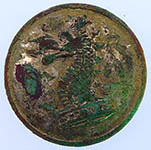 |
 |
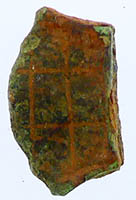   |
| 19thC livery button |
17thC lead token |
Medieval knife pommel |
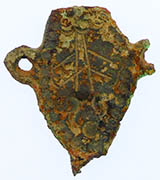 |
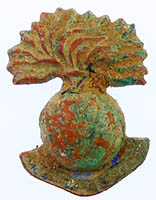 |
 |
| 17thC clothing fastener |
WWII Royal Fuseliers badge |
Georgian watch winders |
 |
|
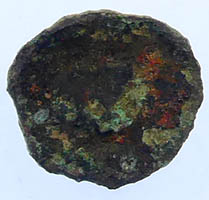 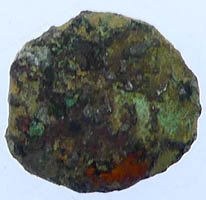 |
| 15thC lead token |
|
1st C AD Celtic bronze unit |
  |
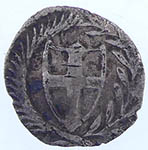  |
| 1844 Victoria milled silver sixpence |
1649 Commonwealth hammered silver penny |
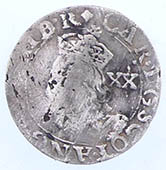  |
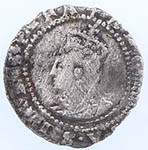 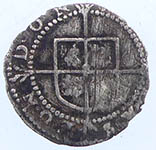 |
| 1636 Charles 1st hammered silver twenty pence -2nd coinage |
1580-1 Elizabeth 1st hammered silver penny - Latin cross mint mark |
 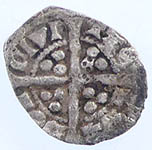 |
  |
1279 Edward 1st hammered silver farthing
Obv +EDW*******
Rev CIVI/TAS/LON/DON - London mint |
1199 John hammered silver short cross half penny - Class 5
Obv hEN***
Rev NC+AD - Moneyer Adam of Winchester mint |
  |
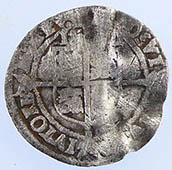  |
1300-1310 Edward II hammered silver florin penny Class 10
Obv + EDWAR R ANGL DNS hYB
VILL/SCIE/DMV/NDI - Bury St Edmunds mint |
16thC Elizabeth 1st hammered silver three pence |
 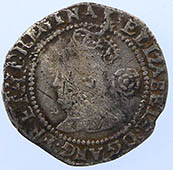 |
  |
| 1572 Elizabeth 1st hammered silver three pence |
1327 Edward III hammered silver penny
Lombardic M
Obv +EDW ***REX****LI
Rev ELMI/ -Durham mint |
 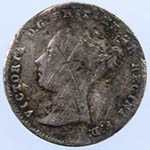 |
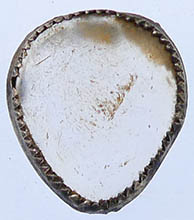 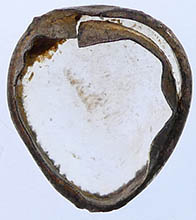 |
| 1859 Victoria milled silver three pence |
Georgian silver bezel with glass stone |
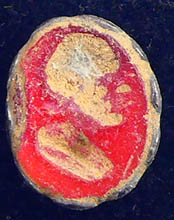  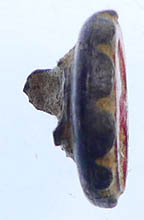
Tiny Georgian silver fob seal matrix |
  |
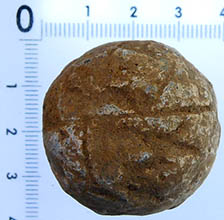 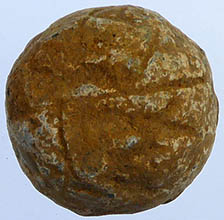 |
| 1640's Civi war cannon war - 8oz - half pounder |
16thC stone cannon ball
34mm dia 5.5 oz |
 |
  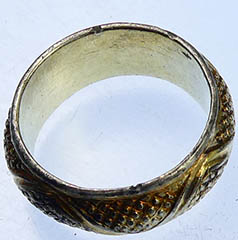 |
| Medieval pin |
Gilded silver ring - no hall marks - not sure of date yet |
  |
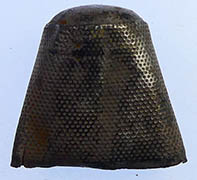 |
 |
| 2000 BC Bronze Age flat ace |
Georgian silver thimble |
16th C clothing fastener
Class E Type 3
|
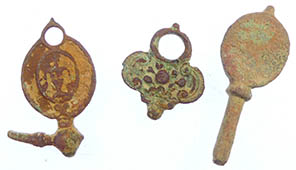 |
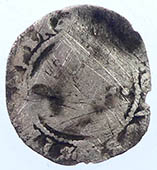 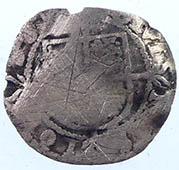 |
| Georgian watch winders |
16th Elizabeth 1st hammered silver half groat |
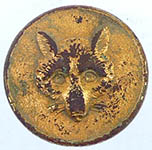 |
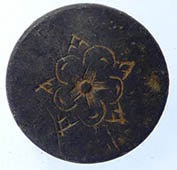 |
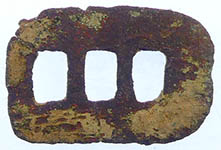 |
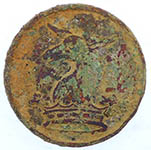 |
| 19thC hunting button |
18thC Royal Navy button |
18th C clog fastener |
19thC livery button |
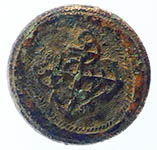 |
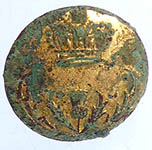 |
 |
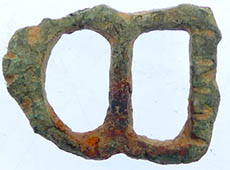 |
RN Purser - 1807
In use 1807 - 1825
In Gilt |
1820-30 Scottish regiment button - unknown |
Georgian button |
1500-1650 buckle |
 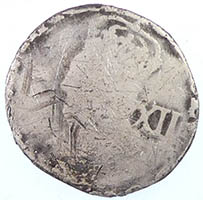
1625 Charles 1st hammered silver shilling (12 pence) |
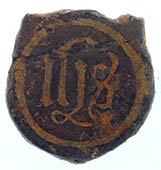 |
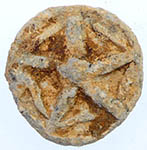 |
16thC Tudor clothing fastener with religious inscription
IHS: dating from the 8th c., this is an abbreviation for "IHESUS," the way Christ's Name was spelled in the Middle Ages (despite popular belief, the monogram stands neither for "Iesus Hominum Salvator" --"Jesus Saviour of Men" -- nor for "In His Service.") Popularized by St. Bernardine of Siena, the monogram was later used by St. Ignatius of Loyola as a symbol for the Jesuit Order.
The IHS monogram is an abbreviation or shortening of Jesus' name in Greek to the first three letters. Thus ΙΗΣΟΥΣ, ιησυς (iēsus, "Jesus"), is shortened to ΙΗΣ (iota-eta-sigma), sometimes transliterated into Latin or English characters as IHS or ΙΗC.
The symbol is said to appear rarely in the catacombs, only in the catacomb of Priscilla and the atrium of the Capella Gr�ca (Greek Chapel).1 It was popularized in the fifteenth century, however, by Franciscan disciple Bernadine of Sienna as a symbol of peace. In 1541 St. Ignatius Loyola adopted the symbol with three nails below and surrounded by the sun as the seal of the Jesuit order.
Contrary to some authors, the monogram originally stood for neither for Iesus Hominum Salvator ("Jesus Savior of Men") nor for "In His Service." Some attribute its origin to Constantine's vision, where he saw a cross with the inscription "In hoc signo vinces" ("in this sign you shall conquer,"2 which is abbreviated, according to them, as IHS. However, this seems to require a stretch, as do claims that it is really a pagan symbol. The simplest explanation, as an abbreviation of Jesus' name, is best. |
15thC lead token |
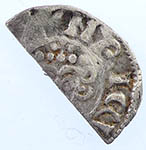  |
 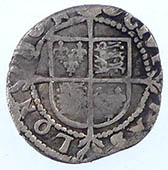 |
1199 John hammered silver short cross half penny - Class 5
Rev REV.ON - Moneyer Andreu |
1587-9 Elizabeth 1st hammered silver half groat - crescent mint mark |
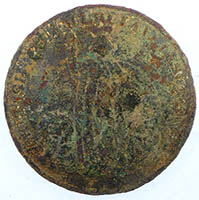 |
|
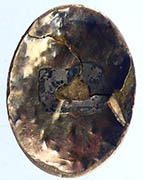  |
| Huge Insurance company button |
|
Georgian plated gold cuff link |
  |
  |
| 1603-4 James 1st hammered silver oen pence - first issue |
1216 Henry III hammered silver short cross half penny |
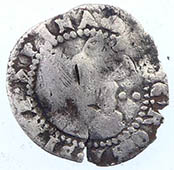  |
 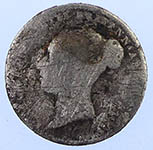 |
| 1592-5 Elizabeth 1st hammered silver half groat - Tun mint mark |
1839 Victoria milled silver sixpence |
 |
 |
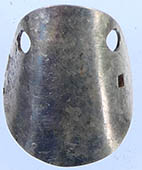 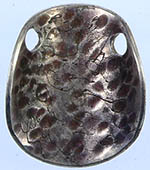 |
| 16thC Tudor button |
1500-1700 mount |
Decorated silver mount |
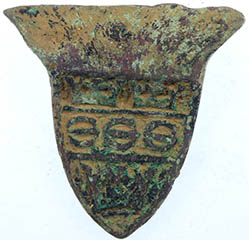 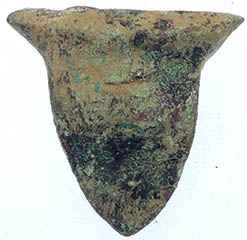 |
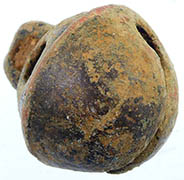 |
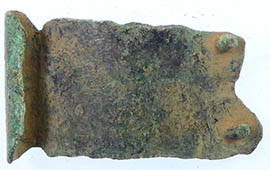 |
| Medieval handle mount - Edward crown decorations |
18thC crotal bell |
Medieval buckle plate |
 |
 |
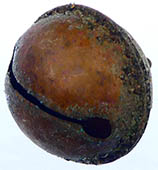 |
 |
| Victorian silver chain |
17thC belt clasp |
Georgian horse hanress bell |
The Royal Fusiliers (City of London Regiment), 1881-1961 |
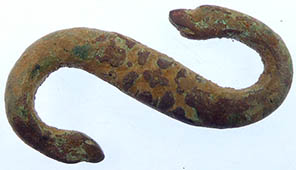 |
 |
 |
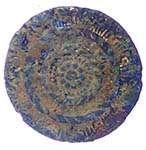 |
| 16thC Tudor S buckle |
16thC Tudor pendant |
18thC clog fastener |
Georgian button |
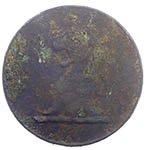 |
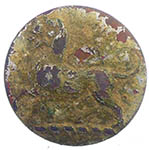 |
 |
 |
| 19th C livery button |
19th C livery button |
2nd Regiemnt of foot button ? |
19th C livery button |
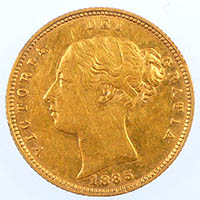 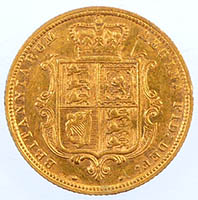 |
1885 Victoria milled gold half sovereign
3.99g,19.2mm |
 |
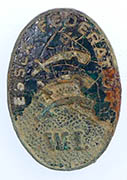 |
 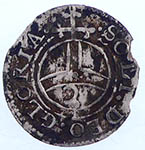 |
| 16thC Tudor button |
WWI Essex federation enamelled badge
Federation Of Womens Institutes Members
|
Maximilian I as elector (1623-1651)
Electorate of Bavaria
Halbbatzen (2 kreuzer) without date (1623-1637)
silver
2 / SOLI DEO GLORIA / Imperial orb
M C P R V B D S R I A E E / Shield of Wittelsbach arms |
| |
|
|
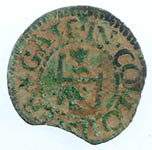 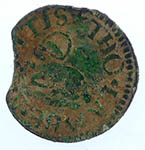 |
 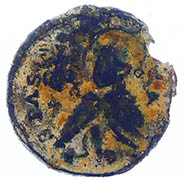 |
| 17th Theo Lambe of Colchster Essex hammered copper trade farthing |
Unknown continental copper coin |
 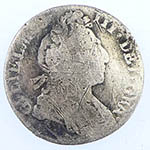 |
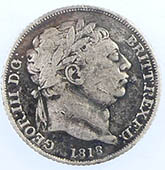  |
| 1697 William III milled silver six pence |
1818 George III milled silver shilling |
 |
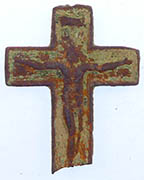  |
| Tudor purse bar |
Victorian cruifix |
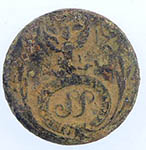 |
 |
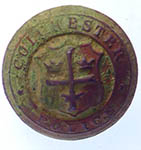 |
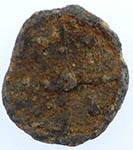 |
| 19thC livery button |
16th C Tudor button |
Victorian Colchester Police button |
15thC lead token |
  |
 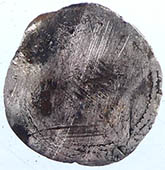 |
| 1247 Henry III hammered silver voided long cross farthing |
1603 James 1st hammered silver half groat |
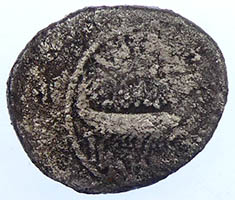 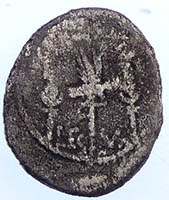
32 BC Mark Antony, Legionary silver Denarius. ANT.AVG.III.VIR.R.P.C Galley, Legionary Eagle between two standards |
 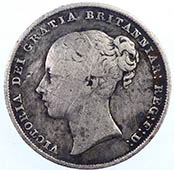 |
  |
| 1844 Victoria milled silver shilling |
1943 George VI milled silver sixpence |
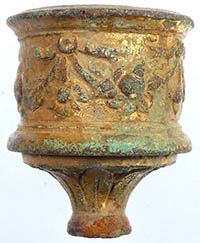 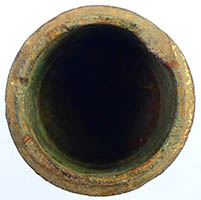 |
 |
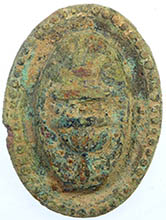 |
| Georgian gilded candle holder |
Georgian furniture mount |
Georgian furniture mount |
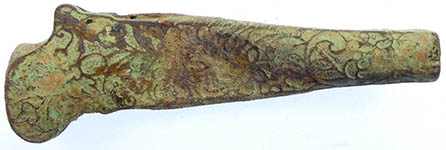 |
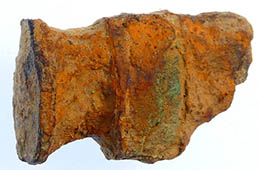 
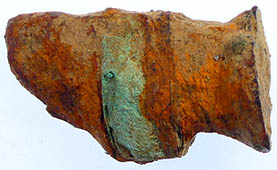
|
| 17thC knife handle |
Roman bronze knife handle |
 |
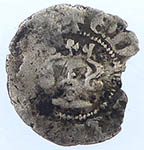 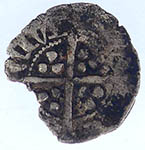 |
13th Light dragoons unlisted butto c1800
'Still unrecorded, but I have it in my book as the below'
Tim
13th Light Dragoons
Officer - 1800-1830 |
1279 Edward 1st hammered silver half penny
Obv +ED**** |
 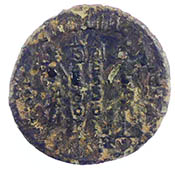 |
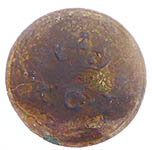 |
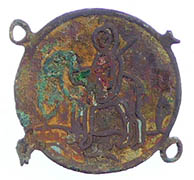 |
4thC Roman bronze sent for ID
I can tell you what it is and give you a pretty tight date range for it, but unfortunately, I can’t pull enough information out of the legends (which appear as though they might become readable with a bit of de-crusting) to say who the portrait is supposed to represent and which was the mint city of origin.
This belongs to the first phase of the ginormous, extended issue of silvered, billon reduced centenionales which were struck in honor of the official move to Constantinople of the Roman Imperial seat beginning in 330. These include, in addition to this type, the Constantinopolis and Vrbs Roma city commemoratives and a few other types limited to this era and emission.
This type – GLORIA EXERCITVS, two soldiers standing front, heads turned towards each other; each holds a spear in outer hand and rests inner hand on a shield – between them, two standards.
This type would be one of the top two or three contenders for the ancient coin type found as the greatest number of surviving pieces (along with the fallen horseman FEL TEMP’s) possibly the most common coin of antiquity surviving in our era.
Now, this segment of this enormous emission (two standards between the soldiers, and a “full” weight ~ 2.5g) dates to 330-335 AD.
There are at least eight different persons (the three Caesars repeated as Augustus included) portrayed on this series of coins.
These were struck for Constantine I, Augustus; also for Constantine Jr, Constans and Constantius II, each as Caesar.
Coins of this group just before and then following Constantine’s death (337-340) have only one standard between the two soldiers, and the average weight was reduced further to ~ 1.70g. All three of Constantine’s sons are represented as Augustus on this later issue and (the unfortunate) Constantinian cousin, Delmatius was briefly included as well.
Let me know if you manage to clean the legends up a bit - I might be able to give you a name, tighter date, and mint, depending on what might become legible.
Mark
|
Crown RCI
The Corps of Invalids was a British unit that provided garrison troops for the defence of England and Great Britain between 1688 and 1802. The men and officers were all veterans of the British Army chosen by the commissioners of the Royal Hospital Chelsea to serve in lieu of a place at the hospital or receipt of a pension. |
Interesting badge |
 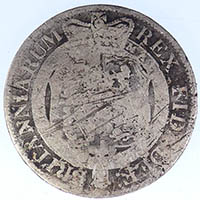 |
 |
 |
1819 George III milled silver half crown - 30 pence |
17thC lead mount |
1500-1700 mount |
 |
 |
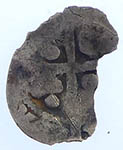 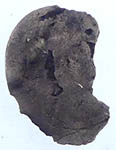 |
| 16thC Tudor hooked fastener |
18thC crotal bell |
Medieval long cross hammered silver penny |
 |
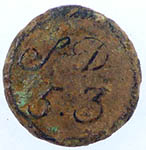  |
London Midland and Scottish railway company button
The London, Midland and Scottish Railway was a British railway company. It was formed on 1 January 1923 |
1770's 5 shillings and 3 pence coin weight - 1/4 gold guinea
SD 53 |
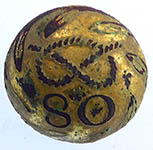 |
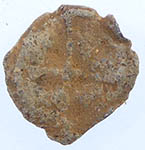 |
 |
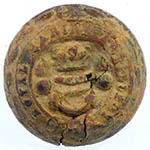 |
80th Regiment of foot button
Description: 80 under Staffs knot under crown within wreath.
Category: Regular Army;
Type of button: Convex 18mm ;
Metal: Copper Alloy gilt; Backmark: C JENNENS LONDON
Date: 1820-1830 |
15thC lead token |
17thC clothing fastener |
WWII Royal Marines button |
 |
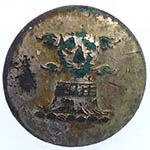 |

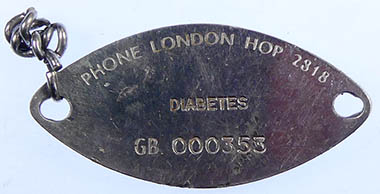
|
| 18thC Royal Navy silver button |
19thC livery |
1940's Silver medical alert bracelet
|
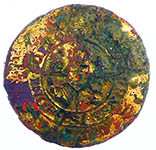 |
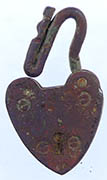 |
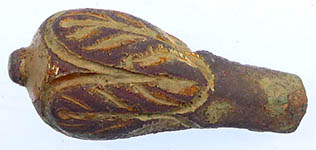 |
RN - Packet Service
( Mail & Supplies Delivery )
c.1800-1811
Firmin & Co |
Victorian clasp |
Georgian gilded handle |
  |
| Admiral Sir Edward Vernon (30 October 1723 – 16 June 1794) was a Royal Navy officer who became Commander-in-Chief of the East Indies Station. |
  |
 |
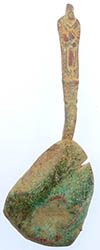 |
| 1568 Elizabeth 1st hammered silver six pence |
Goerigan trade weight |
Georgian apostle spoon |
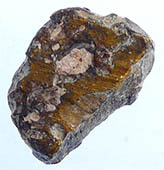 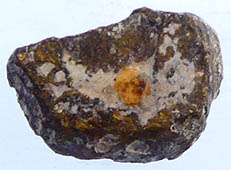 |
  |
| Gold nugget |
1351 Edward III hammered silver penny - Pre/Post Treaty
Obv + ED**************LI
Rev CI**/*AS/DV* - Durham mint |
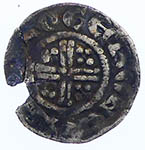  |
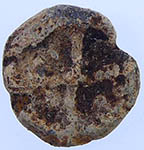 |
 |
1180 Henry II hammered silver short cross penny - Class 1
Obv hENRICVS **
Rev ROGER ON EX - Moneyer Roger of Exeter mint |
15th C lead token |
O/R's - 1881-1901
THE 16TH. (THE QUEEN'S) LANCERS (1812 - 1922)
The 2nd Light Horse was a British cavalry regiment raised in 1759. They first saw action at the siege of Belle Isle in 1761 and later fought in the American war of Independence. They were later renamed the 16th Lancers and earned the nickname 'Scarlet Lancers' because they were the only lancers to wear a scarlet tunic. They are the only British cavalry regiment to break an infantry square, which they did at Aliwal in the Punjab in January 1846.
|
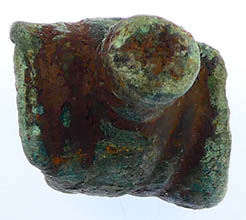 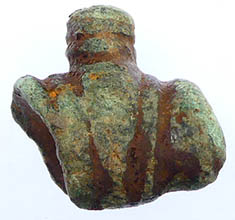
 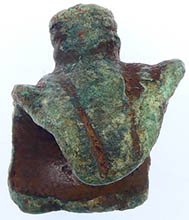
|
 |
| Unknown bronze Roman socketed mount ? |
18th C toy cannon |
 |
 |
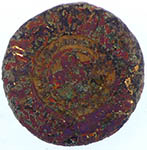 |
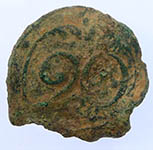 |
| 1900's Generic merchant navy button |
RN Capt / Commander - 1787
RN Lieutenant - 1787 |
Coldstream Guards
Officer - 1800-1820 |
French Infantry Button
20th Line Regiment
Circa 1803-1814 |
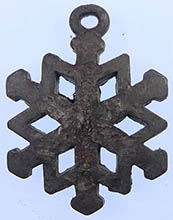 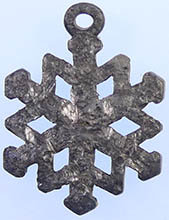 
Very interesting heavy thick 6 point star pendant - military - not Id'd it yet
Inscription reads VON RAP.PEN 2029 ?? |
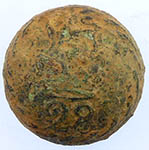 |
 |
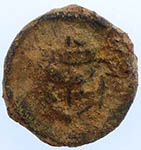 |
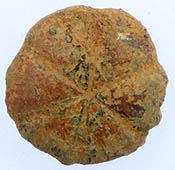 |
The 28th became the North Gloucestershire Regt of Foot in 1782.
Description: Lion surmounting crown atop of 28.
Category: Regular Army;
Type of button: Convex17mm;
Metal: Copper Alloy, silvered; Backmark: I Mc GOWAN LONDON;
Date: c1800-1820 |
1500-1700 mount |
1900 Generic merchant navy button |
A Medieval (1250-1450) sheet copper alloy (0.50mm thick) domed sexfoil belt mount |
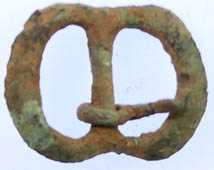 |
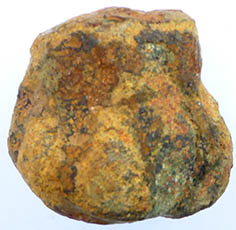 |
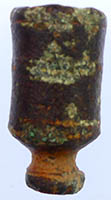 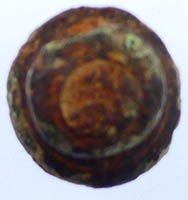 |
| 1500-1650 buckle |
Medieval bronze pot foot |
Medieval bronze candle holder |
 |
| Huge 18th C toy cannon |
  |
 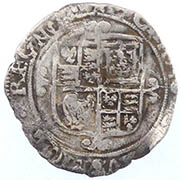 |
| Georgian pipe tamper |
1640-1 Charles 1st hammered silver sixpence - star mint mark |
 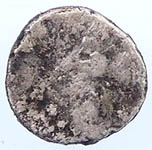 |
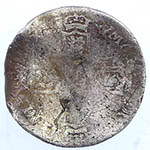 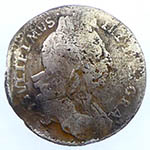 |
| Unknown tiny silver disc ?? |
1697 William III milled silver sixpence |
 |
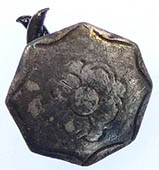 |
 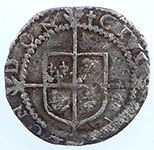 |
| 17th C Charles II silver button - reported as treasure to museum |
18th C Royal Navy cufflink |
1580-1 Elizabeth 1st hammered silver penny - Latin cross mint mark |
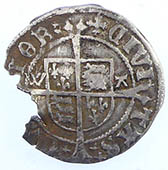 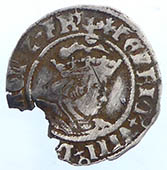 |
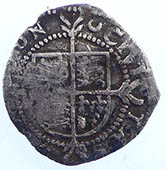 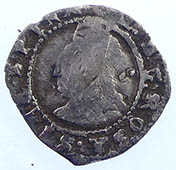 |
1526-32 Henry VIII hammered silver half groat - Cross potance mint mark
Archb Warham WA by shield- Canterbury mint mark |
1587-9 Elizabeth 1st hammered silver half groat - Crescent mint mark |
 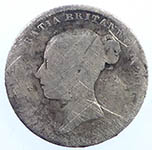 |
 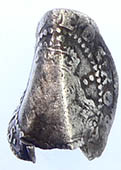 |
| 1838 Victoria milled silver sixpence |
16th C Elizabeth 1st hammered silver half groat |
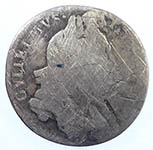 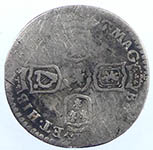 |
  |
| 1697 William III milled silver sixpence |
1836 William IV milled silver four pence |
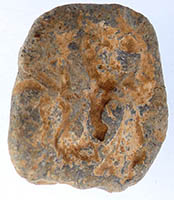 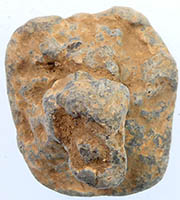 |
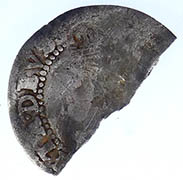  |
| Crude medieval lead seal matrix |
1610- 11 Irish James 1st hammered silver sixpence |
 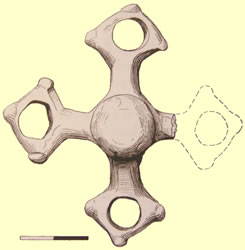 |
HARNESS FITTING
Late Early Medieval (Anglo-Saxon) to early Medieval cast copper alloy harness fitting. This is an Anglo-Scandinavian design and dates from circa AD 1000 to 1150.
This artefact is a strap distributor, formed of a central lozengeform section with a domed circular boss. The reverse of the boss is slightly hollow. There is a projecting arm from each corner of the lozenge; the arms are sub-rectangular with concave sides. Each arm terminates in an incomplete loop which would have secured leather straps.
Chronology
Broad period: EARLY MEDIEVAL
Period from: EARLY MEDIEVAL
Period to: MEDIEVAL
Ascribed Culture: Anglo-Scandinavian
Date from: Circa AD 1000
Date to: Circa AD 1150
Materials and construction
Primary material: Copper alloy
Manufacture method: Cast
Completeness: Incomplete |
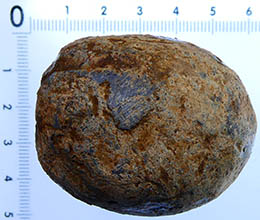 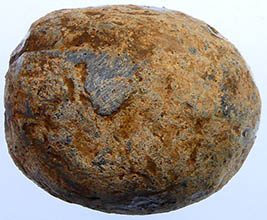
Roman lead sling shot |
  |
 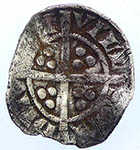 |
| 1247 Henry III hammered silver voided long cross half penny |
1279 Edward 1st hammered silver penny
Obv +ED***NGL DNS ***
Rev VILL/SCIE/DMV/NDI - Bury St Edmunds mint |
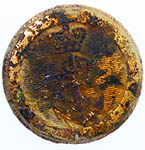 |
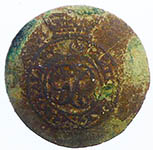 |
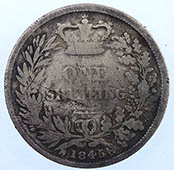 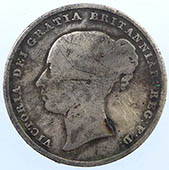 |
RN Capt / Commander - 1812
RN Lieutenant - 1812
RN Midshipman - 1812 |
Georgian Royal engineers button |
1845 Victoria milled silver shilling |
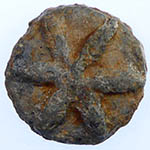 |
 |
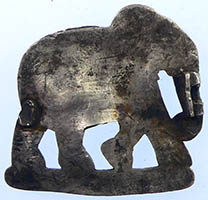 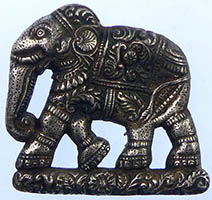 |
| 15th C lead token |
Georgian watch winder |
Victorian heavy silver Indian brooch |
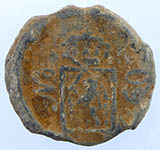 |
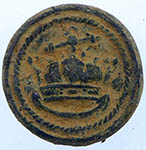 |
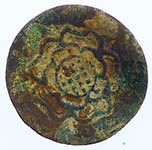 |
 |
| Post medieval Dutch lead bale seal |
1900's Generic Merchant Navy button |
18THc Royal Navy button |
17th C lead token |
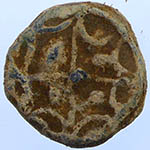 |
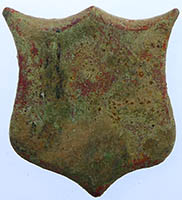 |
 |
 |
| 15thC lead token |
1500-1700 mount |
19thC livery button |
1901-1952 Royal Artillery button |
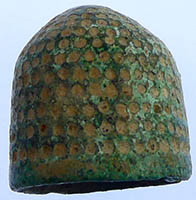 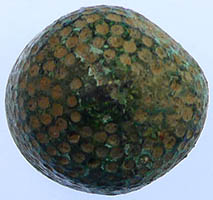 |
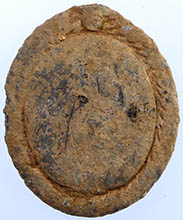 |
 |
| Medieval beehive thimble |
Georgian lead carriage mount |
Medieval lead finial |
 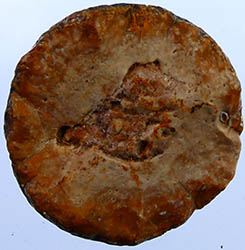 |
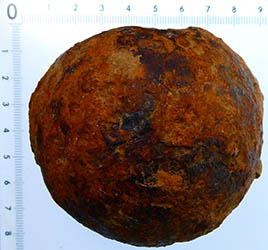 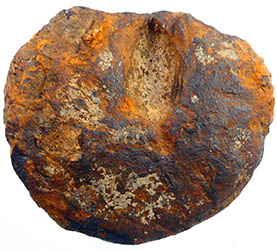 |
| 16th C stone cannon ball |
17thC exploded iron cannon ball |
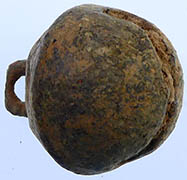 |
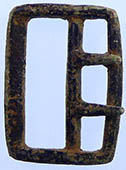 |
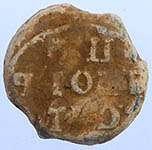 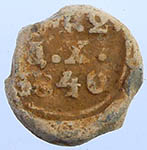 |
| 18thC crotal bell |
19thC buckle |
1840 Russian lead bale seal |
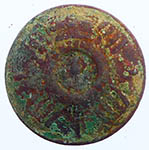 |
|
  |
Scots Fusilier Guards
( Scots Guards )
Officer - 1856-1877 |
|
1216 Henry III hammered silver short cross half penny |
 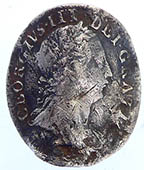 |
  |
| 1763 George III milled silver three pence |
1279 Edward 1st hammered silver penny
Obv +EDWAR R ANGL DNS hYB
Rev VILL/SCIE/DMV/NDI - Bury St Edmunds mint |
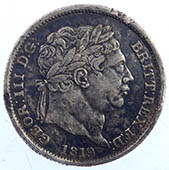  |
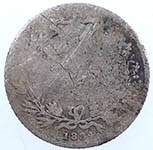 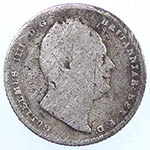 |
| 1819 George III milled silver shilling |
1834 William IV milled silver sixpence |
 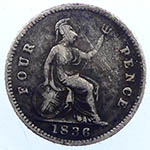 |
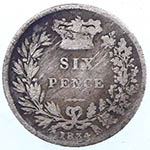  |
| 1836 Wiiliam IV milled silver four pence |
1834 William IV milled silver sixpence |
  |
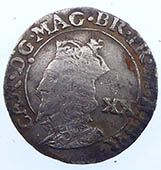  |
| 1660 Charles II hammered silver half groat |
1636 Charles 1st hammered silver twenty pence -2nd coinage |
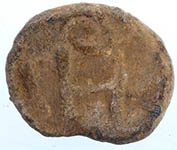 |
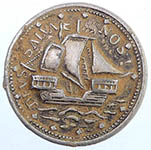 |
 |
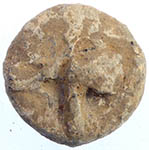 |
| 17thC lead token |
20thC button |
Post medieval lead Dutch bale seal |
15thC lead trade weight |
 |
 |
  |
| Portsmouth City Police |
19thC livery button |
18thC Apothecary weight |
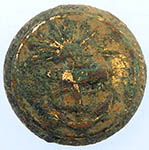 |
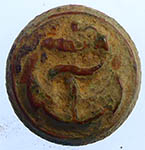 |
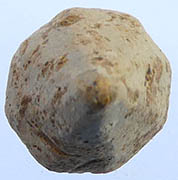  |
| UNITED KINGDOM |
| P&O Line |
| In use 1920 - 1940s |
| Maker - Unknown |
|
1900's Generic merchant navy button |
Medieval lead gaming token |
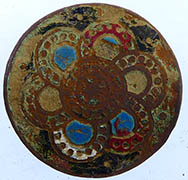 |
 |
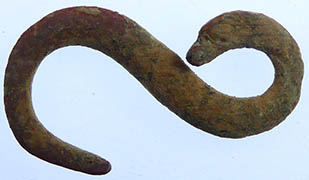 |
| Georgian enamelled button |
RN Capt / Commander - 1901
Other Ship's Officers - 1901
In use 1901 - 1952
Kings crown |
16thC Tudor S buckle |
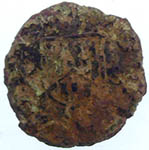  |
 |
| 1653 John Sewell, grocer Colchester hammered farthing |
Georgian jews harp |
 |
 |
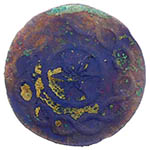 |
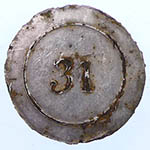 |
| 1500-1700 mount |
c10th C Saxon harness cheek piece |
Georgian button |
Description: 31 within plain inner circle.
Category: Regular Army;
Type of button: Flat 23mm;
Metal: Copper Alloy silvered; Backmark: None;
Date: c1784-1797 |
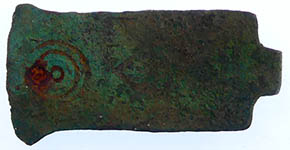 |
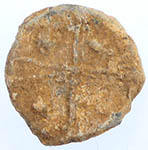 |
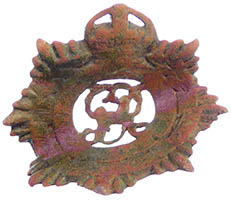 |
 |
| Medieval book clasp |
15thC lead token type 2 |
WWI Royal Army Service Corp badge |
Georgian trade weight |
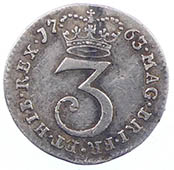  |
  |
| 1763 George III milled silver three pence |
1573-8 Elizabeth 1st hammered silver three pence - Eglantine mint mark |
 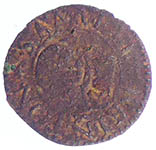 |
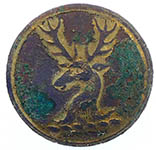 |
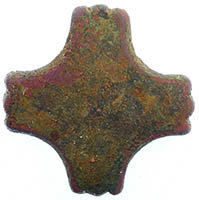 |
| 17th C hammered copper trade farthing |
19thC livery button |
1500-1700 mount |
 |
 |
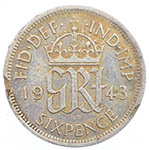 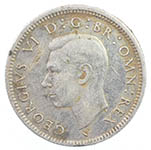 |
| 17thC belt slide |
1839-1849
The Essex Regiment |
1943 George VI milled silver sixpence |
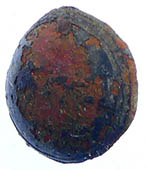 |
 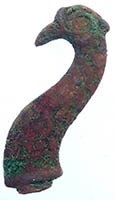 |
 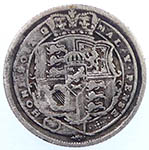 |
| 1500-1700 mount |
Roman mount ? |
1817 George III milled silver sixpence |
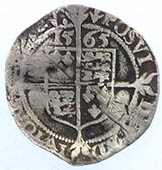 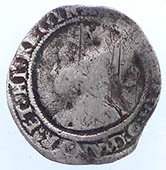 |
 |
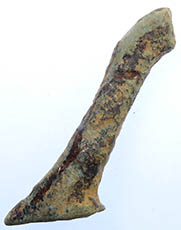 |
| 1565 Elizabeth 1st hammered silver three pence |
An officers example to the 80th who were first the 80th Royal Edinburgh Volunteers between 1778-1784, then Staffordshire Volunteers 1793-1881. |
Medieval pot leg |
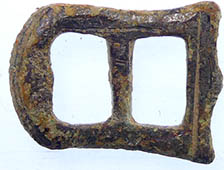 |
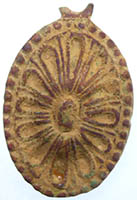 |
 |
 |
| 1500-1650 buckle |
Georgian hanging pendant |
Territorial Hertfordshire Regiment T Shoulder Title |
1900's generic merchant navy button |
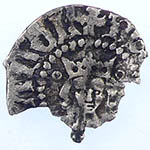  |
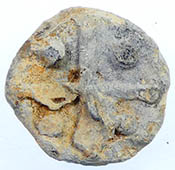 |
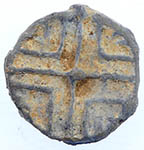 |
1413-22 AD Henry V, hammered silver half penny - Type 3, annulets by crown
obv HENRIC REX ANGL
rev /TASx/LON - London mint |
Medieval lead trade weight |
15thC lead token |
  |
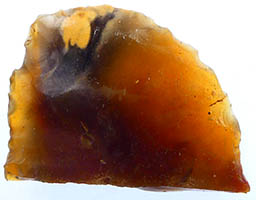 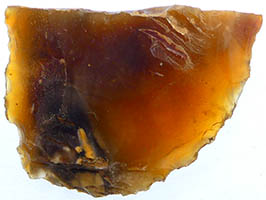 |
| 1816 George III milled silver sixpence |
11,000 BC flint scraper |
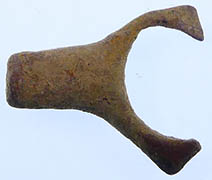 |
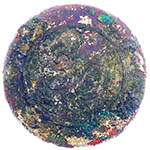 |
 |
 |
| C10th C Saxon harness cheek piece |
Description: 30 within plain inner circle.
Category: Regular Army;
Type of button: Flat 22mm;
Metal: Copper Alloy silvered; Backmark: S FIRMIN STRAND;
Date: c1784-1797 |
RN Capt / Commander - 1812
RN Lieutenant - 1812
RN Midshipman - 1812
RN Volunteer Gr.I - 1812
After this issue a Midshipman
will have the Captain's style |
RN Greenwich Hospital Service
Officer's Hospital Staff Tunic
Button
In use 1800 - 1815 |
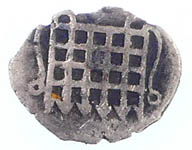 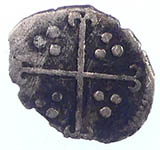 |
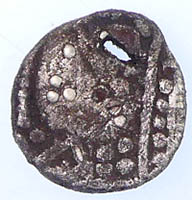 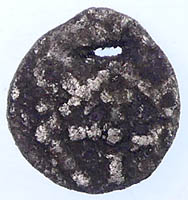 |
| 16thC Elizabeth 1st hammered silver half penny |
600 AD Saxon silver sceat - sent for recording and ID
1.265g,11.53mm
Thanks for this find, which I have recorded as EMC 2022.0447. The punched hole is unusual.
This is Series C2. The attached adjusted images show the coin in its correct orientation, with a bust facing right and the standard on the reverse.
Best regards,
Martin |
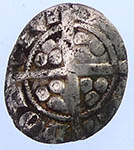  |
 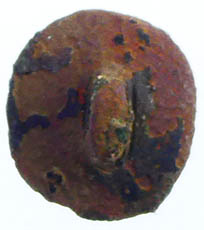 |
1279 Edward 1st hammered silver penny
Obv +EDWAR ANGL DNS hYB
Rev CIVI/TAS/LON/DON - London mint |
17thC seal matrix - heart and arrow design |
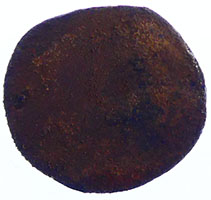 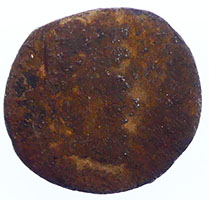  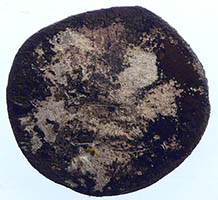
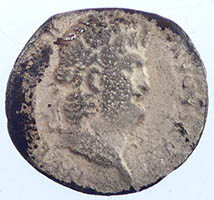 
|
| 2ndC Roman silver coin - sent off for ID |
 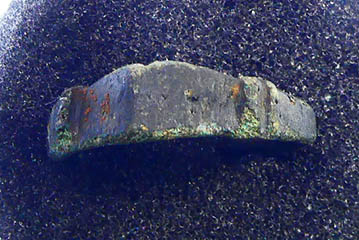
Roman bronze ring |
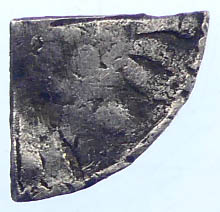 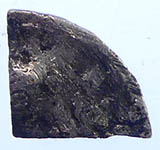 |
  |
| 1247 Henry III hammered silver voided long cross farthing |
19th C Victoria milled silver sixpence |
  |
 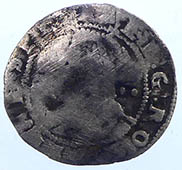 |
| 1582-4 Elizabeth 1st hammered silver half groat - A mint mark |
16thC Elizabeth 1st hammered silver half groat |
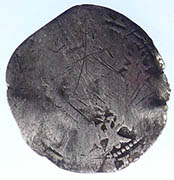 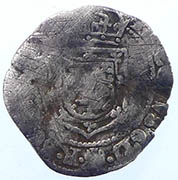 |
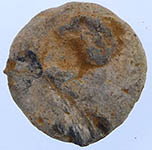 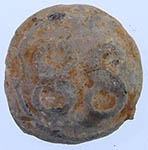 |
James VI of SCotland hammered silver qtr Thistle Merk ( 20 pence)
Obv IACOBUS 6 D.G.R.SCOTORUM - James VI by the grace of god king of the Scots
Rev REGEM IOVA PROTEGIT 1602 - Jehovah protects the King 1602 |
88th Regiment of foot lead button/mount ? |
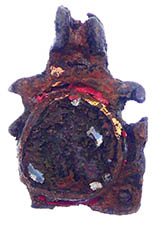 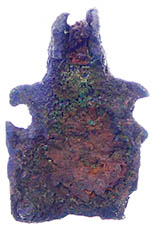 |
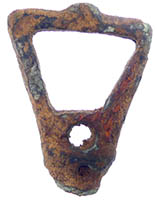 |
| Medieval enamelled harness pendant - red and blue with gilding |
Medieval stap end |
  |
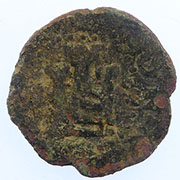  |
| 1670 Ipswich town issue copper farthing |
17thC Spanish copper cob |
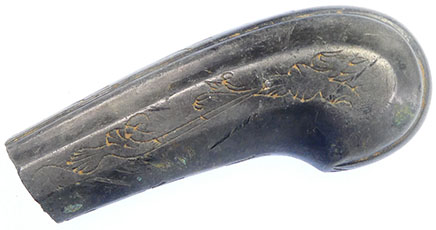 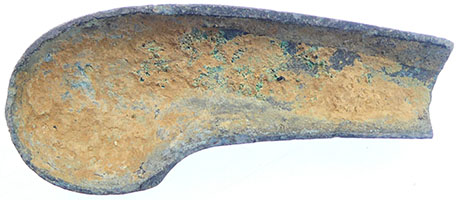
Unknown Georgian decorated pewter handle cover ? |
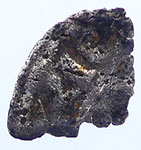 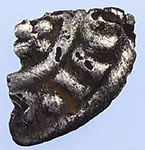 |
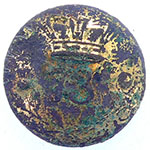 |
| 1216 Henry III hammered silver short cross farthing |
Officer - 1855-1881
53rd (Shropshire) Regiment of Foot button
52nd who were in the West Indies from 1780-1800 . Known as the 53rd Regt of Foot from 1757-1782, then Shropshire between 1782-1881. |
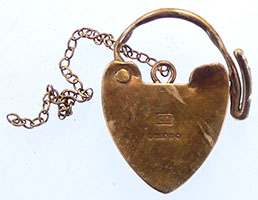 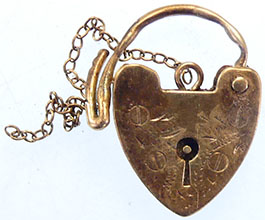 |
  |
Victorian gold jewelry padlock
Marked 9 carat gold |
Victorian rose gold brooch |
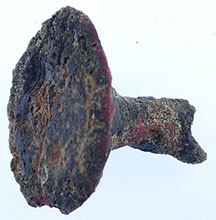  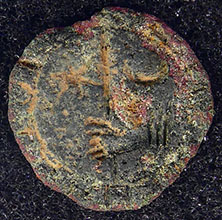
Medieval seal matrix - hand holding staff |
  |
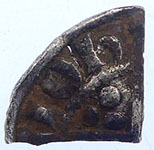 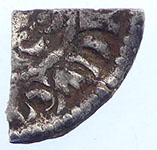 |
| 1920 George V milled silver half crown |
1247 Henry III voided long cross farthing |
 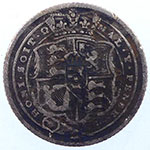 |
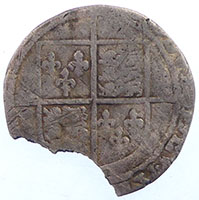  |
| 1818 George III milled silver sixpence |
16thC Elizabeth 1st hammered silver shilling |

Badge still in its plate before trimming
 'A badge for a Knight of the Order of the Holy Sepulchre in bronze and dating somewhere around C13/14th possibly very slightly later . This is a very scarce item and it relates to The Equestrian Order of the Holy Sepulchre of Jerusalem being a Catholic chivalric order of Knighthood that traces its roots to Godfrey of Bouillon, principal leader of the First Crusade. According to reliable sources in the Vatican and Jerusalem, it began in historical reality as a mixed clerical and lay confraternity (association) of pilgrims which gradually grew around the most central of the Christian holy places in the Middle East, the Holy Sepulchre or the tomb of Jesus Christ.This would have been a pin for a member of the order , there is a mark on the reverse where the original pin would have been fixed ' 'A badge for a Knight of the Order of the Holy Sepulchre in bronze and dating somewhere around C13/14th possibly very slightly later . This is a very scarce item and it relates to The Equestrian Order of the Holy Sepulchre of Jerusalem being a Catholic chivalric order of Knighthood that traces its roots to Godfrey of Bouillon, principal leader of the First Crusade. According to reliable sources in the Vatican and Jerusalem, it began in historical reality as a mixed clerical and lay confraternity (association) of pilgrims which gradually grew around the most central of the Christian holy places in the Middle East, the Holy Sepulchre or the tomb of Jesus Christ.This would have been a pin for a member of the order , there is a mark on the reverse where the original pin would have been fixed '
|
| |
|
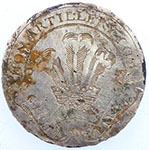 |
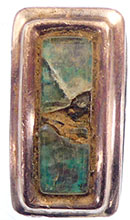 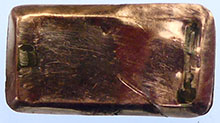 |
| 19thC Hon Artillery Company button |
Victorian gold brooch |
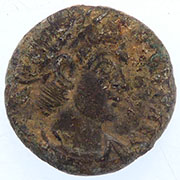  |
 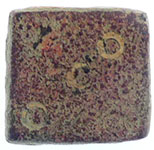 |
| 4thC Roman Constantine bronze - two soldiers standing |
18th C bullion weight |
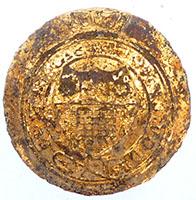 |
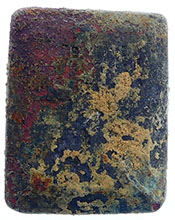 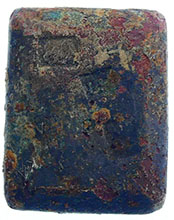 |
Description: ST MARGTS & JOHNS VOLS around portcullis and crests
Category: English Volunteer infantry;
Type of button: Convex;
Metal: Copper Alloy, gilded . Backmark: ;
Date: 1798-1801
St Margaret & St John Volunteers, an Assocoiation 1798-1801, a 3 Company unit commanded by Robert, Viscount Belgrave. Re-raised in 1803 as a full battalion 800 strong and based in Westminster. |
Unknown Victorian trade weight marked '89' |
  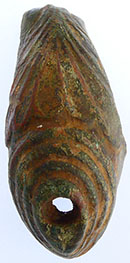
Georgian sword pommel |
 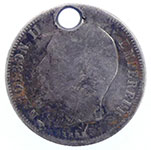 |
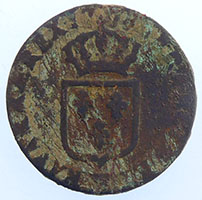  |
| 1860 Napoleon II milled silver 50 cents |
France 1778 W Coin, Louis XVI, Sol ou sou, Lille, Copper |
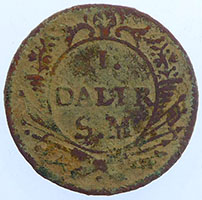 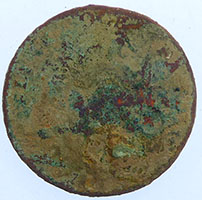 |
|
| 1718 Sweden One Daler Silvermynt - Karl XII |
Roman silver coin sent for ID |
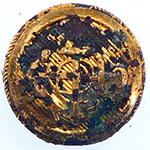 |
 |
 |
 |
RN Purser - 1807
In use 1807 - 1825
In Gilt |
19thC Local militia button
Honi soit qui mal y pense (Old French: shame upon him who thinks evil of it) |
Miltary button - no reseached it yet |
Trinity House
UK Lighthouse Authoruty
Pilot's Tunic Button
In use 1900 - 1930s
"Trinity House Pilot" |
 |
 |
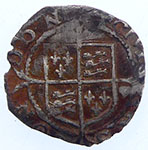 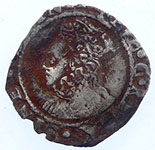 |
| Georgian button |
17thC button |
16thC Elizabeth 1st hammered silver penny |
 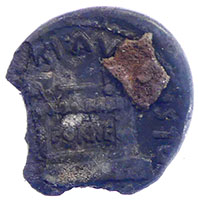 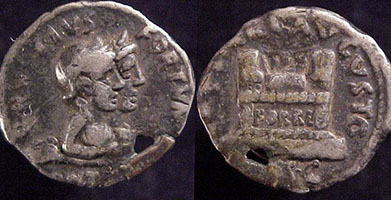
Time of Augustus, 19 B.C.
Obv: Q RVSTIAS FORTVNÆ ANTIAT conjoined busts right of Fortuna Victrix, helmeted and holding patera & Fortuna Felix, diademed; both resting on bar with rams' head finials
Rev:
Chris,
Wow - never thought I'd see one of these in a British find. I know exactly what it is and will go into more detail a bit later (I have a med appt today, should be short)
This is a rare, early "moneyers' denarius" of Augustus - I happen to have one myself, but I don't think I've seen 2 others opn 40 years.
I'll see if I can dig up a photo of mine and if not, I can probably scare up a photo on the web.
Mark Leham |
| |
|
| |
|
| |
|
| |
|
| |
|




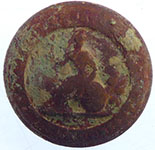

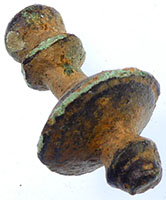
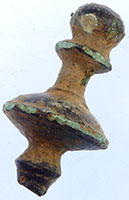


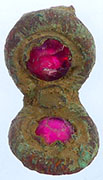
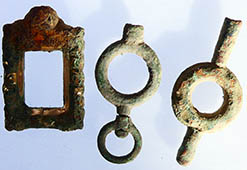

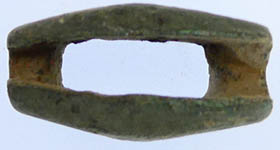
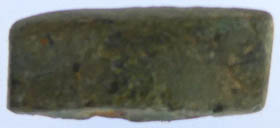
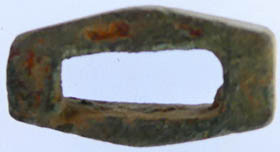
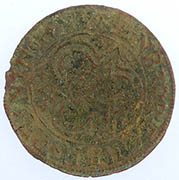
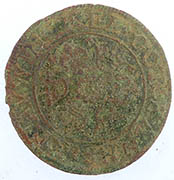


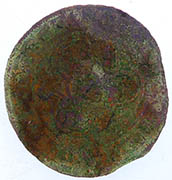
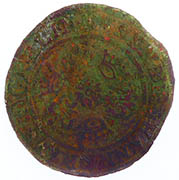

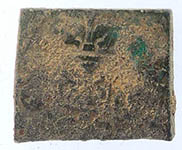


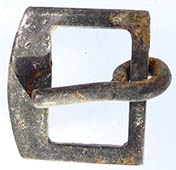

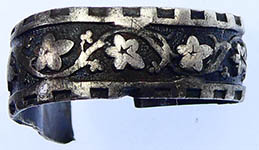

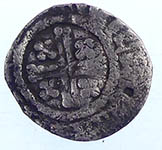





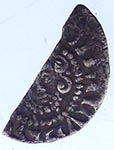
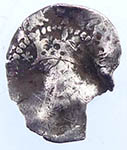


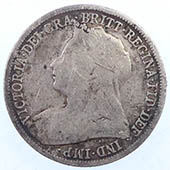
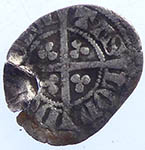
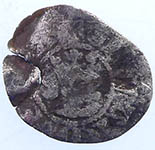

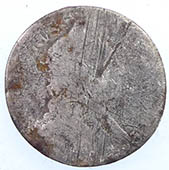


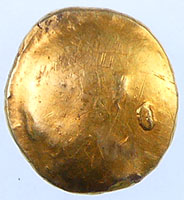





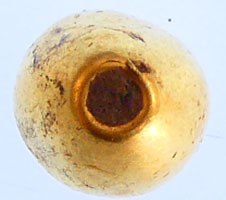

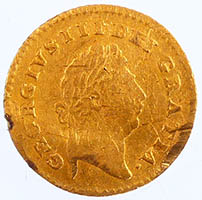
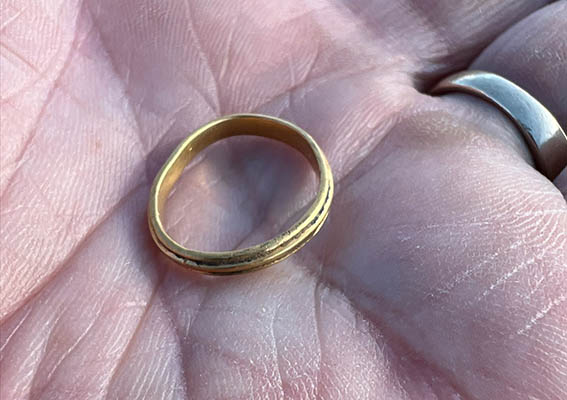

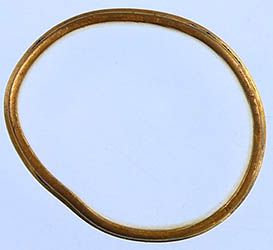



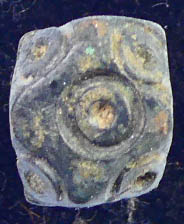


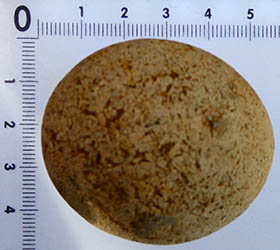

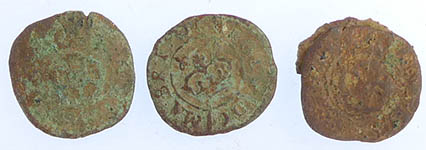







































































































































































































































































 'A badge for a Knight of the Order of the Holy Sepulchre in bronze and dating somewhere around C13/14th possibly very slightly later . This is a very scarce item and it relates to The Equestrian Order of the Holy Sepulchre of Jerusalem being a Catholic chivalric order of Knighthood that traces its roots to Godfrey of Bouillon, principal leader of the First Crusade. According to reliable sources in the Vatican and Jerusalem, it began in historical reality as a mixed clerical and lay confraternity (association) of pilgrims which gradually grew around the most central of the Christian holy places in the Middle East, the Holy Sepulchre or the tomb of Jesus Christ.This would have been a pin for a member of the order , there is a mark on the reverse where the original pin would have been fixed '
'A badge for a Knight of the Order of the Holy Sepulchre in bronze and dating somewhere around C13/14th possibly very slightly later . This is a very scarce item and it relates to The Equestrian Order of the Holy Sepulchre of Jerusalem being a Catholic chivalric order of Knighthood that traces its roots to Godfrey of Bouillon, principal leader of the First Crusade. According to reliable sources in the Vatican and Jerusalem, it began in historical reality as a mixed clerical and lay confraternity (association) of pilgrims which gradually grew around the most central of the Christian holy places in the Middle East, the Holy Sepulchre or the tomb of Jesus Christ.This would have been a pin for a member of the order , there is a mark on the reverse where the original pin would have been fixed '































































































































































































































































































































































































































































































































































































































































































































































































































































































